#google ads (30)ppc (22)adwords
Text
The Importance of Digital Marketing: Top 5 Reasons You Need It
At one point online marketing was just a replacement and different thanks to market. It opened a replacement sort of media on which to peddle goods and services. But within the past few years, the importance of digital marketing has become something else.
It’s become an integral a part of what a business is to its customers.
It’s not enough to possess an internet site or run some un-focused Ads campaign. Don’t have integrated digital marketing strategies working for your business? Time is functioning against you due to it.
As the Internet becomes entwined with everything we do, the importance of digital marketing is becoming crystal clear.
Let’s take a glance at why your business needs digital marketing to grow and thrive.
Importance of Digital Marketing
1. Reaches People Where They Spend Their Time & Money
In 2019, the typical Internet user has a minimum of 7 social media accounts. That’s up from 3 just 5 years ago.
97% folks adults under 65 are on social media a minimum of once a month. The overwhelming majority are thereon a day . Social media is strongly preferred as a way of customer care.
Although as many as 89% of customer messages are ignored by businesses.
22% of the planet population is on Facebook. 62% of individuals within the US are there. 76% of Facebook users and 51% of Instagram users are thereon a day .
30% of individuals on social media mention a selected brand when pertaining to milestones in their lives. generation X is slightly more likely to interact with a brand on social media than millennials.
The trend immediately is that the average person spends over 2 hours each day on social media. Teenagers average 9 hours.
Social media is integrated into everything they are doing from school, to work, to entertainment, to hanging out with friends.
Social Media is where people are. But do people buy things there?
One of the highest 10 reasons people say they’re on social media is to shop for products advertised to them. They spend around 37% of their social media time interacting with branded content.
57% of Millennials say that social media has made the ads they see more relevant to them. 48% of individuals say they made their last online purchase because the direct results of a Facebook ad.
But only 45% of marketers think their social media efforts are paying off. There are definitely some winners and losers on social media. Just having a profile and sharing some content once during a while isn’t enough. you would like a social media marketing strategy.
When you understand the way to maximize your ROI in social media advertising, you win big.
Social media marketing and advertising are only a bit of digital marketing. But it’s a really important one. Throughout this text , we’ll check out many sorts of online marketing methods. this may show the importance of digital marketing to your business.
2. Levels the Playing Field for little Business
You’ve seen it happen before. an enormous company like Walmart involves town and wipes out 100’s of local specialty shops. Starbucks rolls in and mom and pop coffee and bagel shops close .
We’ve seen the web equivalent of this with Amazon. It’s hard to compete with the name recognition or the millions that they put into marketing and reputation management.
That’s where the importance of digital marketing shines as a beacon of hope for little businesses. It’s an equivalent for brick & mortar, ecommerce, and private brands alike. Digital marketing actually allows smaller businesses the power to carry a top ranking position, sort of a client we helped outrank Amazon and Lowe’s using our AdWords services.
Digital marketing allows small businesses to compete with a way smaller advertising budget. When managed effectively, it gives them laser-focused control over where and the way they spend their money. once you have this type of control and therefore the data to support decisions, you create smarter ones.
3. More Targeted
When you run a magazine ad, for instance , you actually do some targeting. you recognize if your audience reads that publication. you've got some control over placement and size. You control the message within certain publisher guidelines.
That ad may reach 1 million plus readers.
But what percent of this million is really your target? a specific fashion magazine may need a demographic 59% female ages 35-55. they'll have some college education. And you recognize they’re curious about the sort of fashion depicted within the magazine. But that’s an enormous demographic.
One of the gifts that digital marketing has given us is that the ability to dissect huge demographics.
Who’s that person? It’s the person presumably purchase what you sell.
When you do targeting at this level, you create a billboard that’s highly relevant to your target market. Because it’s so relevant, it connects on A level that more general advertising can’t. This connection gives it the power to influence decisions. you are doing it without annoying traditional advertising techniques.
So, what quite targeting is feasible with digital marketing?
Let’s check out search advertising as an example. that has AdWords. during this sort of digital marketing, you target people doing searches in Google. Search results now account for about 64% of website traffic across the web .
For businesses who’ve put strong specialise in SEO (search engine optimization) the maximum amount as 80% of traffic arrives from search results.
Search Engine Marketing, or PPC (pay per click) allows you to position yourself near the highest of searches. That’s albeit that’s not where your website would organically appear.
With SEM, you can target people with a very specific:
Challenge
Goal
Profession
Education level
Buying behavior
And more
Do this by bidding on search queries that represent these specific targets. Build ads and landing pages around them to convert that traffic.
Social media advertising similarly allows you to narrow your audience Use the info they’ve collected about their users. Tell Facebook, for instance , to only show your ad to people with a really specific recent behavior, interest, location or other identifier.
You don’t spend thousands on one ad. And you'll run ads indefinitely. So you'll easily modify that ad to attach with different groups of individuals . You don’t have this level of control over who sees your ad with the other sort of marketing.
4. Can be often Hyper-Personalized
We’ve barely begun to debate the importance of digital marketing with regard to targeting. With email marketing, yet one more important a part of digital marketing, you'll target almost right down to the individual level.
We call this “segmentation“.
In some cases, you really can get to the individual level. Marketers call this “personalization“.
72% of consumers prefer that companies use email to speak with them. this provides people a way of control that creates them easier signing up for your emails and buying from you. If they don’t like what you send them, they will just unsubscribe.
But once you send them content that's highly relevant, they stay your list and still buy again and again. you'll see where within the importance of digital marketing lies during a repeat lifetime customer.
There are basic programs which will allow you to feature a person’s name or certain information automatically to an email. But we’re talking a few far more advanced approach that’s proven its ability to urge results for our clients, just like the improvements within the chart below. That’s email segmentation, automation, and personalization.
If it isn’t relevant, you don’t send it to them. And if you'll make small changes to a bit of content make thereto more relevant to a special segment, you are doing it to succeed in more people.
Automation allows you to send that content at the optimal time to get the specified result. It takes the repetitiveness out of the method .
You learn what this optimal time is thru your data collection process. this point could also be immediately. it's going to be a particular time of day. it's going to be sending a particular message before another one.
Finally, you've got personalization. You recognize a private on an individual level. you're ready to recommend the simplest products to them because you recognize their purchase history. You recognize that they only visited your website and abandoned their cart. You ask them by name. They feel that you simply respect their individuality.
While these are 3 various things , once they work together they get results.
The Power of Segmentation, Automation & Personalization
Subscribers are 14% more likely to open emails that are segmented. They’re 101% more likely to click a call to action within the email. Segmentation reduces bounce rates by 5%. That’s tons in email marketing. It reduces unsubscription rate by around 10%.
But what about sales and revenues? Segmentation seems like tons of labor . Does it have an ROI to justify it?
Businesses who use automation to send these emails at the optimal time on the average increase their conversion rates by 50%. Automated emails are 70% more likely to urge opened and have 50% higher click-through rates.
A study found that companies who use
Email Marketing
automation are 133% more likely to send highly relevant content. during a typical email campaign, 75% of revenues are drawn from the segmented portion of the campaign. the remainder comes from general emails.
It’s this relevance that gets these sorts of results and further proves the importance of digital marketing to a business. 81% of individuals who get an email that’s personalized supported past purchases buy again.
5. More Advanced Analytics
What does one really realize how a TV ad performed? you'll determine best times for the ad to air and best frequency if you are doing some testing. you would possibly create attention group to drill down on the info . But generally, you simply know its reach consistent with the agency and whether it increased buzz, sales, or met an identical marketing goal.
Now, let’s check out the importance of digital marketing as compared .
With digital marketing you recognize the subsequent about your ads and users:
Whether they actually saw it. With TV ads, you don’t even know that much. they might are within the kitchen or had the TV on mute.
If they interacted with it
If they liked it
If they lingered thereon
If they shared it with a lover
If it prompted another action
If it led to a purchase down the road (this is vital when deciding the way to best spend money)
You also learn far more about the people interacting thereupon ad:
Who’s most curious about your ads
What are they like
What makes them more likely to require an action
Who is easiest to convert
Who spends more
What do they are doing online
What terms do they use to seek out you online
Which websites do they visit that lead them to yours
All of this is often pretty easy to trace with free analytics software like Google Analytics. otherwise you can gain even more insight with paid tools. Use what you learn to chop costs where you aren’t seeing a return on investment. Increase spend and efforts where you get the simplest results.
Continue to streamline your campaigns to optimize your results.
You may still plan to distribute some money for traditional marketing. Many businesses wish to have a mixture in their marketing plan. therein case, the importance of digital marketing is what proportion you study who your customers are that carries over to other marketing methods.
1 note
·
View note
Text
The Importance of Digital Marketing
Top 10 Reasons You Need It
At one point, online marketing was simply a new and different way of marketing. It has opened a new form of media on which to peddle goods and services. But in recent years, the importance of digital marketing has become something else.
It has become an integral part of what a company represents for its customers.
It is no longer enough to have a website or launch an untargeted advertising campaign. Are integrated digital marketing strategies not working for your business? Time works against you because of that.
While the Internet is closely tied to everything we do, the importance of digital marketing becomes crystal clear.
Let's see why your business needs digital marketing to grow and prosper.
Importance of Digital Marketing
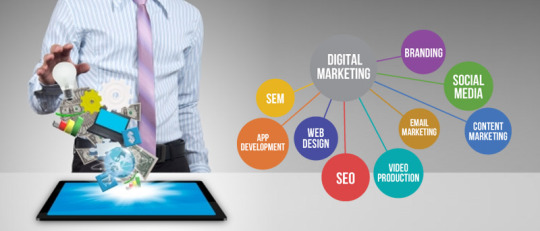
1. Reaches People Where They Spend Their Time & Money
In 2019- 2020, the average user has at least 7 social media accounts. That's up from 3 just 5 years ago.
97% of US adults under 65 use social media at least once a month. The vast majority work there every day. Social media is highly preferred as a means of customer support.
Although 89% of customer messages are ignored by businesses.
22% of the world's population is on Facebook. In the United States, 62% are present. 76% of Facebook users and 51% of Instagram users are there daily.
30% of people on social media mention a specific brand by referring to important milestones in their lives. Generation X is slightly more likely to interact with a brand on social media than the millennium.
The current trend is that the average person spends more than 2 hours a day on social media. Adolescents have an average of 9 hours.
Social media is embedded in everything they do, whether it's at school, at work, entertainment or outings with friends.
Social media is where people are. But do people buy things there?
One of the top 10 reasons why people say they are on social networks is to buy them products that are advertised to them. They spend about 37% of their time on social networks interacting with branded content.
57% of Millennials report that social media has made the ads they see more relevant to them. 48% of respondents say they made their last online purchase directly following an announcement on Facebook.
But only 45% of marketers believe that their efforts in social media are paying off. There are certainly winners and losers on social media. Having a profile and sharing content from time to time is not enough. You need a social media marketing strategy.
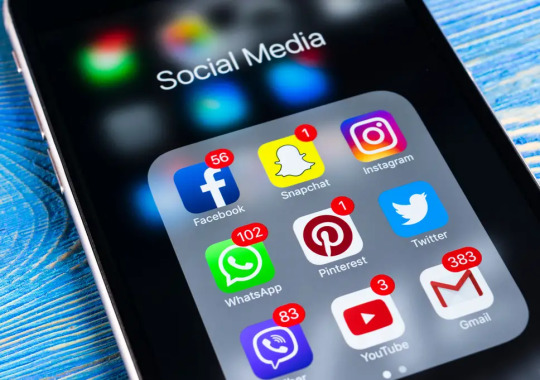
When you understand how to maximize your return on investment in advertising on social networks, you win big.
Social marketing and advertising is just one element of digital marketing. But it is very important. Throughout this article we will look at many types of online marketing methods. This will show the importance of digital marketing for your business.
2. Levels the Playing Field for Small Business
You have already seen this happen. A big company like Walmart is moving into the city and eliminating hundreds of specialty shops. Starbucks arrives and closes the mom and pop coffee shops and bagels.
We saw the online equivalent of that with Amazon. It's hard to compete with name recognition or the millions invested in marketing and reputation management.
This is where the importance of digital marketing shines as a beacon of hope for small businesses. It's the same for brick and mortar, e-commerce and personal brands. Digital marketing actually allows small businesses to be in a prominent position, as a customer that we have helped to outperform Amazon and Lowe by using our AdWords services.
Digital marketing allows small businesses to compete with a much smaller advertising budget. When managed effectively, it allows them to control, by means of a laser, where and how they spend their money. When you have this type of control and the data you need to make a decision, you make better ones.
Continue to explore the benefits and importance of digital marketing. The way it levels the playing field becomes clearer.
3. More Targeted
When you run an ad in a magazine, for example, you do some targeting. You know if your target audience reads this publication. You have some control over the location and size. You control the message as part of some publisher guidelines.
This announcement can reach more than one million readers.
But what percentage of this million is really your target? A particular fashion magazine could have a population of 59% of women aged 35 to 55 years old. They may have a university education. And you know they are interested in the type of fashion described in the magazine. But it's a huge demographic group.
One of the strengths of digital marketing is the ability to dissect considerable demographic data. Cut them into very targeted groups to focus on a specific type of person.
Who is this person? This is the person most likely to buy what you are selling.
When you target to this level, you create a highly relevant ad for your target market. Because it is so relevant, it connects to a level that more general advertising can not. This connection gives him the ability to influence decisions. You do it without annoying traditional advertising techniques. You do not run the same ad thousands of times over a month. Or interrupt someone's program again and again.
So what kind of targeting is possible with digital marketing? You will probably be surprised.
Let's look at search advertising as an example. This includes AdWords. In this form of digital marketing, you target people doing research in Google. Search results now account for about 64% of website traffic on the Internet.

For companies that focus on SEO (Search Engine Optimization), 80% of the traffic comes from search results.
Search advertising, also called PPC (pay per click), allows you to position yourself at the top of research. It is even if it is not there that your website would appear naturally.
With search advertising, you can target people with a:
Challenge
Goal
Job
Level of education
Buying behavior
And more
Do this by leveraging search queries that represent these specific targets. Create ads and landing pages around them to convert that traffic.
Advertising on social networks also allows you to narrow down your target audience. Use the data collected on their users. Tell Facebook, for example, to show your ad only to people with a very specific behavior, interest, location, or recent ID.
You do not spend thousands in one ad. And you can run ads indefinitely. So, you can easily edit this ad to connect to different groups of people. You do not have the same control over who sees your ad with another form of marketing.
4. Can Be Hyper-Personalized
We have just begun to discuss the importance of digital marketing when it comes to targeting. With email marketing, which is another important aspect of digital marketing, you can target almost to the level of the individual.
We call this "segmentation".
In some cases, you can actually reach the individual level. Marketers call this "personalization".

72% of consumers prefer that businesses use email to communicate with them. This gives people a sense of control that makes them more comfortable signing up for your emails and buying at home. If they do not like what you send them, they can simply unsubscribe.
But when you send them extremely relevant content, they stay on your list and continue to buy again and again. You can see where the importance of digital marketing lies in customer loyalty.
Some basic programs allow you to automatically add a person's name or certain information to an email. But we are talking about a much more advanced approach that has proven its ability to deliver results for our clients, just like the improvements shown in the table below. It's the segmentation, automation and personalization of email.
With segmentation, you collect data on each subscriber to email. You use this data to sub-divide your list according to certain traits or behaviors identified by the analysis. Once divided, send the content of each segment most relevant to that segment.
If it's not relevant, you do not send it to them. And if you can make small changes to one element of the content and make it more relevant to a different segment, you do it to reach more people.
Automation allows you to send this content at the best time to achieve the desired result. This eliminates the repetitiveness of the process.
You learn what time is optimal with your data collection process. This time can be immediately. It can be a certain moment of the day. It may be to send a certain message before another.
Finally, you have the customization. You recognize a person at an individual level. You can recommend the best products because you know their purchase history. You acknowledge that they have just visited your website and abandoned their cart. You refer to them by name. They feel that you respect their individuality.
While these are 3 different things, when they work together they get results.
The Power of Segmentation, Automation & Personalization
According to Mail-chimp's extensive data, subscribers are 14% more likely to open segmented emails. They are 101% more likely to click on a call to action in the email. Segmentation reduces bounce rates by 5%. It's a lot in email marketing. This reduces the churn rate by about 10%.
But what about sales and revenue? Segmentation looks like a lot of work. Does it have a return on investment to justify it?
Aberdeen Research Firm found that conversion rates increased by 10% with segmentation. But not only are the conversion rates higher. People receiving segmented emails spend more. Marketers saw their revenues increase by 760% thanks to segmentation.
Companies that use automation to send e-mails at the best time on average increase their conversion rate by 50%. Automated emails are 70% more likely to open and have a 50% higher clickthrough rate.
A study found that companies that use automation are 133% more likely to send highly relevant content. In a typical email campaign, 75% of revenue comes from the segmented portion of the campaign. The rest comes from general emails.
It is this relevance that gives these kinds of results and proves the importance of digital marketing for a business. 81% of people who receive a personalized email based on previous purchases are buying again.
However, segmentation and automation are not a task that all small businesses can achieve on their own. These require an investment in advanced tools that remove much of the monotonous, repetitive and tedious process.
These programs are essential for effective segmentation. But their cost is often prohibitive for a small business. It's another added benefit of working with a digital marketing company. It can support the costs while allowing you to benefit from these advanced technologies.
Successful companies are increasingly using segmentation, automation and customization.
5. More Advanced Analytics
What do you really know about the performance of a TV commercial? You can determine the best times for ad delivery and the best frequency for testing. You can create a newsgroup to explore the data. But in general, you only know its scope according to the agency and whether it has increased buzz, sales or achieved a similar marketing goal.

Now let's take a look at the importance of digital marketing in comparison.
With digital marketing, you know the following information about your ads and users:
If they really saw it. With TV commercials, you do not even know much. They could have been in the kitchen or have the TV muted.
If they interacted with her
If they liked it
If they lingered over
If they shared it with a friend
If that prompted another action
If this led to a sale on the road (it's important to decide how best to spend money)
You will also learn a lot more about who is interacting with this ad:
Who is most interested in your ads?
what do they like
What makes them more likely to take action?
Who is the easiest to convert
Who spends more
What are they doing online?
What terms do they use to find you online?
What websites do they visit that lead to yours?
All of this is easy enough to follow with free analytics software like Google Analytics. Or you can gain even more insight with paid tools. Use what you have learned to reduce costs where you do not see a return on investment. Increase your spending and effort to get the best results.
Keep streamlining your campaigns to optimize your results.
You can always decide to shell out money for traditional marketing. Many companies prefer to have a varied marketing plan. In this case, the importance of digital marketing is that you learn about who your customers are and about those applied to other marketing methods.
6. Easy to Scale & Adapt
As with any marketing, you need an initial investment to get the traffic flowing. But the importance of digital marketing for small businesses becomes very clear when you see how easy it is to adapt and adapt as your business grows.
For example, with social media campaigns, display ads, and search ads, you can choose a daily budget. You know exactly how much this campaign will cost you.
Now you start to see amazing results. There is no need to enter and renegotiate an advertisement for it to continue to be broadcast. Your ad continues without interruption. As you continue to convert this traffic, you simply increase your daily expenses and income.
If you receive a massive order from a customer and need to save money to avoid having a backlog, it's just as easy.
If something does not work in your marketing, you do not have to wait for the advertising contract to run out. You do not have to start from scratch.
You have the power. Just make this little change and restart the ad.
The importance of digital marketing lies in the fact that you can get instant results. Analyze data and make quick changes to reduce wasted advertising and lost revenue.
This makes us realize how profitable digital marketing is for a small business.
7. Best ROI
Email marketing has the highest ROI of all marketing methods ... period. He can get an impressive return of 3,800%. That's $ 38 in revenue for every dollar spent. About 20% of companies see a return on investment of $ 70 to $ 1 spent.
Email marketing is a conversion machine. But you need a way to build your email list with quality subscribers. Then post the highly relevant content in a subscriber's inbox.
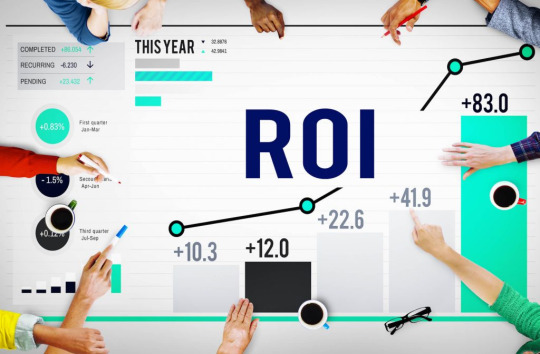
This is most often done through a combination of social media marketing and content marketing. But these marketing methods have an impressive ROI.
Content marketing can generate 3 times more leads than 62% less than traditional marketing. Of course, when we say "lead", we are not just talking about the traffic on the website. They are very likely to buy your product and become loyal customers as you relate to this relationship.
The return on investment of social media can sometimes be indirect. However, a Forbes study found that businesses using social media sold 78% of those who did not use social media. IBM has discovered that a prospect who enters through social media is 7 times more likely to become a paying customer. More chances of converting also means that you spend less money trying to convert people who will never become paying customers.
As a small business, the top priority is profitability. You must be able to make the most of these dollars when you grow your business. Every dollar you spend counts. You must know that this will provide you with a return on investment.
That's the importance of digital marketing for small businesses.
8. Aligns with How People Today Shop
88% of people consider online reviews to be an important part of the buying decision.
23% of people visit your company after reading a good review.
The average American spends more than 24 hours a week online. For Generation Y and Generation Z, 10 hours a day is the norm. This includes time spent working on the Internet and at school.
47% of Generation Y and Generation X women do not watch traditional TV. And 22 million people had canceled their cable at the end of last year. Magazine and newspaper sales continue to decline by about 16% per year.
In addition, more than 1 trillion searches are made online each year. Google holds the monster share with 3.5 billion of these queries. Every day, 8 billion videos are viewed on Facebook, mostly by companies.
Indeed, most consumers now tend to search for products, services or whatever they want online. Most of them are also impatient and do not go beyond the first 5 pages of search results. So you should not just have an online presence. You must be ahead of your competitors. Here's how SEO works for your business. If your website is well optimized, it will be easily detected by users each time they search for a relevant keyword for your brand.
From restaurants to doctors to accounting software and commodities, the modern sales process starts online.
Whether it's a social media friend, the result of a search query, or an email newsletter that he has received in his inbox, it all starts here. The more your business is integrated with the customer's online experience, the easier you can grow your business.
You need a relevant online presence for the vast majority of customers. The importance of digital marketing lies in the fact that it gives you that presence.
How to Be Relevant Online
To be relevant online today, you must:
Have a friendly website.
Invest in SEO so that you appear in search results from certain keywords
Have at least one active social media profile where you interact with customers
Some paid advertising, such as AdWords, Instagram or Sponsored Tweets. It is impossible to be found online without paid media.
Reputation Management. Know what people are saying about you. Request more comments. When asked to comment, most people write positive reviews. When they do not ask, only unhappy people tend to write reviews.
Integrated contact points. All online places must work together. Engage your target customers both online and in your physical store if you are a traditional business.
9. How People Prefer that Businesses Reach Them
People are tired of traditional advertising. They have learned that they have a choice. 20% of 16 to 34 year olds use an online ad blocker. Most of the time, people are fleeing websites that pop up with annoying invitations and announcements when they first access the page.

They choose to consume media that do not require them to advertise.
It seems cliché. But people want respect. They want someone to provide them with information that helps them make informed decisions. They want to buy brands that value what they are worth. They want you to participate in their conversations.
The importance of digital marketing is that it allows you to market to people to show that you respect them and value them as human beings.
10. Integrates Marketing with Mobile Technology
According to research conducted by IBM, mobile transactions are growing at lightning speed by 35% per year. But it's not just buying and selling on mobile.
People are increasingly using their mobile phones as a kind of augmented reality superimposed on a business. They consult reviews and product information in your store. They can order online or contact customer service along the way.

A selfie they take in your store becomes a promotional opportunity for you. They can write a review for you even before leaving your office.
Integrate the mobile experience with the physical experience. As you do, the more your business will take advantage of these opportunities.
Send an alert so that visitors know that something of interest to them is on sale as they walk down that alley. Use the behavior of the physical store as followed by their phone (with permission, of course).
With him, send more relevant offers. Invite someone to visit the store when geolocation indicates it is in the area.
The Importance of Digital Marketing for Your Business
It's clear. Modern economy companies need digital marketing to be competitive. Online is where the customers are. This is where they prefer you to reach them. It is online that begins the modern buying process.
You get the importance of digital marketing. But this does not facilitate the implementation of strategies that allow you to get the return on investment that you are looking for. Find out how we can help you use digital marketing to grow your business. Call us to schedule a consultation: +1 306 994 3090.
#SEO#Search Engine Optimization#Digital Marketing#Online Marketing#Social Media#Social Media Marketing#PPC#SMM#Pay Per Click#PPC Marketing#Web Development#Website#Marketing#Adward#Traditional Advertising#ROI#Email marketing#AdWords services
1 note
·
View note
Text

I posted 64 times in 2021
53 posts created (83%)
11 posts reblogged (17%)
For every post I created, I reblogged 0.2 posts.
I added 141 tags in 2021
#endtrace - 30 posts
#seo - 22 posts
#digitalmarketing - 16 posts
#freshers - 14 posts
#graduates - 13 posts
#onlinetraining - 12 posts
#java - 10 posts
#seotips - 8 posts
#searchengineoptimization - 8 posts
#aiseoagency - 8 posts
Longest Tag: 78 characters
#java framework testing endtrace webdriver selenium programmer softwaretesting
My Top Posts in 2021
#5

Best practices for testing framework using Java Selenium webdriver
1 notes • Posted 2021-11-22 10:36:05 GMT
#4
2 notes • Posted 2021-10-29 09:25:53 GMT
#3
Learn essential digital marketing Courses online from Industry expert trainers.
Digital Marketing Course Overview
2 notes • Posted 2021-10-18 10:00:27 GMT
#2
Get Google Adwords certification training in Hyderabad by ppc expert. You are able to manage Ad campaign with best practice on live Google Ads"
2 notes • Posted 2021-10-26 07:58:40 GMT
#1
Learn Digital Marketing-Live Project-Internship @60% OFF
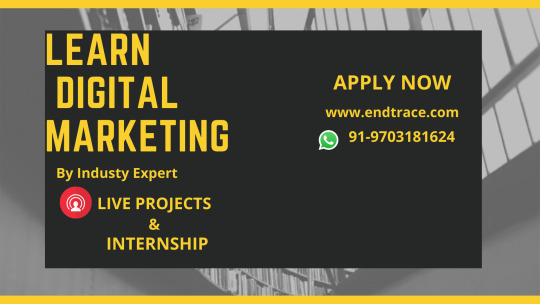
5 notes • Posted 2021-11-08 12:28:01 GMT
Get your Tumblr 2021 Year in Review →
1 note
·
View note
Text
The Ultimate e-Commerce Glossary: 50 e-Commerce Terms You Should Know

According to eMarketer, the global e-commerce market will reach $5 trillion this year. In fact, despite the COVID pandemic forcing businesses to shut shop across industries and verticals, e-commerce sales grew from strength to strength, skyrocketing by 27.6% in 2020.
Clearly, the e-commerce sector is showing no signs of slowing down. So if you are someone who is looking to adapt to a new business model, revisit your existing sales tactics, or create an innovative marketing strategy, you'll need to brush up on some important e-commerce terms that are instrumental in every pitch, strategy, model, and plan. This guide will serve as your holy grail.
To that end, let's get started with the fundamental terminologies that every person who is even 'remotely' (in both senses of the word) interested in e-commerce should know:
What Is E-commerce?
First things first, let's understand what e-commerce is. Simply put, e-commerce or electronic commerce is the process of buying and selling goods or services using the internet. As you can imagine, the process involves monetary and data transactions, typically done instantly and on a global scale.

The E-commerce Cheat Sheet: Top-50 Terms To Know
1. 301 Redirect: Signals a permanent redirection from one URL to another. In other words, it means that the page has permanently moved to another location. The 301 redirect guides website visitors and search engines to the new URL instead of staying stuck on the original URL.
2. Abandonment: Also called cart abandonment, refers to a visitor who visits the website, adds items to their cart, and leaves without making a purchase.
3. A/B Testing: Also called split testing. It is the process of comparing two variants of a web page to see which one is performing better by showing it to prospects at random.
4. Affiliate Marketing: It is a third-party marketing process where a publisher and an advertiser partner to drive traffic to the latter's offering. There is a small fee/commission from every purchase that the publisher earns.
5. Brick & Mortar: It refers to a business that has a physical store where customers can go buy products/services.
6. Brick & Click: It refers to a business that runs an online store along with an offline counterpart.
7. Business to Business (B2B): It is the process of selling products/services to another business, which typically then sells to the consumer.
8. Business to Consumer (B2C): The process of selling products/services directly from the business to the consumer.
9. Call-to-Action: It is an action that you want your customers to take, such as "Shop now, buy today, get a quote, free download, etc." on your website/app. The call-to-action button is typically instruction-based and is designed strategically to capture the visitor's attention as shown below:
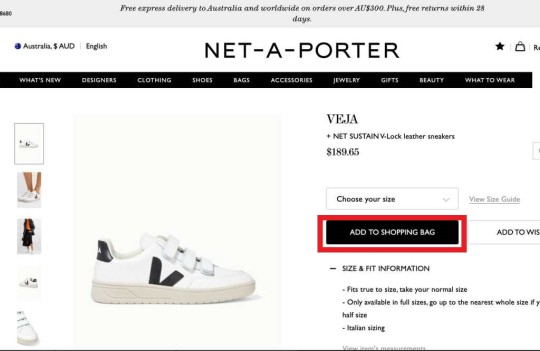
Image Source
10. Conversion: It happens when customers finish one in various tasks such as requesting a quote, filling out a contact form, placing an order, and so on.
11. Conversion Funnel: Also known as a "sales funnel," it is the path (often visually demonstrated) that your prospect takes to become a loyal customer. Here's an example of an e-commerce conversion funnel:
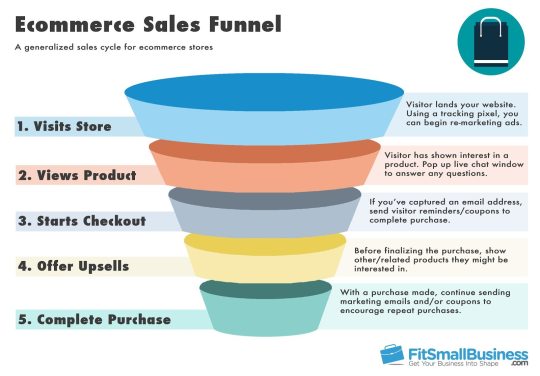
Image Source
12. Conversion Rate: It is calculated by dividing the number of visitors who transformed into paying customers divided by the total number of visitors on a site:
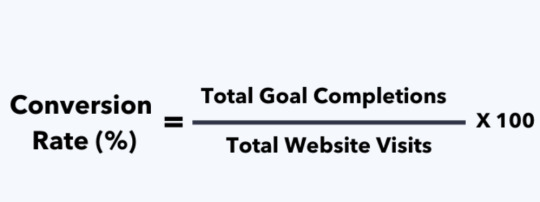
Image Source
13. Customer Relationship Management (CRM): It refers to a system wherein an organization captures valuable user data from various sources such as website, telephone, live chat, direct mail, social media, etc., and analyzes it to improve the customer experience and reach its business goal. There are numerous CRM software available in the market that can help organizations become more user-centric in their business and approach.
14. Cyber Monday: It is the Monday after Black Friday, which typically offers customers the maximum amount of deals and discounts than any other day of the year.
15. Domain: It is the main home page or URL of a website.
16. Email Marketing: It is a type of online marketing that uses a series of emails to target and engage your customers based on your mail list, which comprises users who signed up to receive emails in the first place. Below is an example of excellent email marketing at play:

Image Source
17. E-commerce SEO: These are SEO strategies that primarily work for eCommerce businesses, which includes targeting product pages, category pages, payments pages, etc.
18. Gateway: Also known as "payment gateway," it is a platform that processes payments from the user's bank to the website for online transactions.
19. Google AdWords: It is a type of advertising that allows businesses to set a budget and run promotional ads, which comprise SEO keywords to boost page rankings.
20. Google Analytics: It allows brands to monitor their website traffic and presents the data into graphs and charts so that marketers can assess their brand's online performance over specific periods of time.
21. Google Keywords: It signifies trending words or phrases that users commonly use to search within Google.
22. Inventory: It refers to the number of products and types of brands retailers amass in their stock.
23. Keyword Ranking: It refers to how your website ranks for specific keywords on a search engine results page.
24. Landing Page: It is the page that is displayed once a user clicks on a link, or more specifically, a call-to-action button to engage with the brand and perform a desired action:

Image Source
25. Long Tail Keyword: It is a type of keyword phrase that is more targeted and usually longer (about three to five words) than commonly searched keywords. It allows brands to target a more niche audience.
26: Marketing Automation: It refers to software that can help automate key marketing processes such as segmentation, data integration, customer management, etc., to enhance your customer experience, boost sales across different online channels, and automate repetitive tasks.
27. Metrics: It is a type of measurement for assessing factors like revenue, keyword rankings, website traffic, referrals, among others.
28. Mobile Commerce: It is the process of purchasing products/services on a mobile or a wireless handheld device.
29. Niche: It refers to products/services that are made specifically for a particular industry or a select product.
30. On-Page Optimization: It refers to the diverse measures undertaken inside your website to enhance the web page listing or boost your website's position in the search rankings. It is often considered the first step of SEO.
31. Omnichannel Marketing: It is a type of retail marketing that integrates various shopping methods available to consumers (think: online, physical store, in-app, etc.) with the end goal of providing a seamless, consistent, contextual, and user-friendly shopping experience.**
32. Open Rate: It refers to the percentage of people on your email list that opened a particular email campaign. It is calculated by the number of email messages opened by the total number of email messages sent.
33: Organic Traffic: It refers to the** way in which visitors end up finding your website through a search engine query. Your page ranking will determine how quickly--or 'organically'-- users are able to find your website.
34. Page Rank (PR): It measures where a page ranks with Google or other search engines. The better your page ranking, the closer it will be to be listed on the number one spot.
35. PageViews: Also called Page Impression, it refers to an instance when a visitor visits a website page.
36. Payment Gateway: It is a** technology used by merchants to accept debit or credit card purchases from customers. It helps to protect your customer's sensitive information by encrypting the data that is transmitted.
37. Pay-Per-Click (PPC) Marketing: Also known as Cost Per Click (CPC), it refers to an advertising model where the advertiser pays only when a user clicks on their ad and is successfully directed to their website. Google’s AdWords platform is one of the most popular examples of Pay-Per-Click promotion.
38. QR Code: Short for Quick Response Code, it is a type of matrix bar code that is used for storing URLs and offering convenient access to data via a smartphone.
39. Responsive Design: It is a type of design philosophy that aims to provide a responsive aka customized viewing experience for diverse types of platforms and communication channels such as mobile, desktop, tablet, etc.:
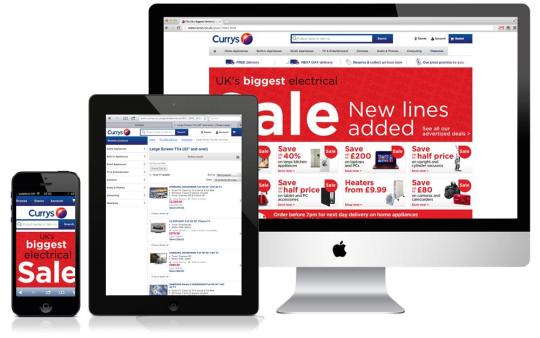
Image Source
40. Search Engine Optimization (SEO): Search Engine Optimization is a digital marketing activity that focuses on driving traffic to a website from organic search results on search engines. In other words, it helps boost the website's visibility in terms of search rankings.
41. Search Engine Results Page (SERP): It is a web page that lists all the results when users search for something using specific terms and keywords.
42. Smarketing: It is the process in which the sales and marketing teams come together to achieve a shared business goal through frequent and direct communication.
43. Third-Party Payment Processor: It refers to a merchant services provider such as PayPal that offers various payment methods to the customers. It helps eCommerce businesses to receive payments without first setting up their merchant account with a bank.
44. Traffic: It refers to the number of** visitors who visit a website during a specified time period.

45. Transaction: It refers to the process of buying a product/service online from a business.
46. Upselling: It refers to a kind of sales strategy where you offer deals on related products and persuade customers to buy more expensive products/upgrades to make a profitable sale.
47. User Experience (UX): It describes a user's overall feeling about a product/service/system with respect to factors such as ease of use, usefulness, usability, accessibility, credibility, value, and desirability.
48. User Interface (UI): It is a graphical layout of a website/app designed to allow for seamless and user-friendly interaction between customers and said application/website.
49. Web Analytics: It is a tool that allows you to assess the impact of your website on your visitors, improve effectiveness, and boost traffic. The common metrics to measure would include the number of site visits, visitor entry points, specific keywords used, online session time, why users left the website, and so on.
50. Wholesale: It refers to the** distributor or manufacturer who sells directly to retailers.
Wrap Up
As is the case with all kinds of businesses, even the e-commerce world has its own language, values, and systems in place. Understanding the basics allows marketers, sellers, and buyers, on the whole, to conduct business with greater confidence, trust, and transparency. So next time you find yourself struggling with any e-commerce term or phrase, you know where to look.

Written by our guest writer Srushti Shah, acquire.io
Srushti Shah is an ambitious, passionate, and out-of-the-box thinking woman having vast Digital Marketing exposure. She is working as a Digital Marketer and Content writer. Her key focus is to serve her clients with the latest innovation in her field, leading to fast and effective results. Working beyond expectations and delivering the best possible results is her professional motto. Other than work, she loves traveling, exploring new things, and spending quality time with family.
.flex-container { align-items: center; display: flex; flex-direction: column; justify-content: center; } @media(min-width: 768px) { .flex-container { flex-direction: row; } }
from RSSMix.com Mix ID 8230801 https://ift.tt/2PlhQkW
via IFTTT
0 notes
Text
Top Digital Marketing Experts and Authorities That You Should Follow

For every great person, a disciple always emerges. The best way to learn is always to learn from the best. Digital marketing probably wouldn’t have been popular if not for the efforts of a number of people. It wouldn’t have been the trend if certain individuals did not make it to be the trend.Just like how Aristotle learned from Plato, his teacher, and became a great philosopher, you can also learn from the digital marketing experts and create a name for your business venture.These people have been in the field of digital marketing for quite long, and they have already familiarized the path of this rocky road. Their experience and achievements earned them the titles of experts and credible authorities to help you learn of their ways.The following list of digital marketing experts are compiled after an amount of tremendous research, taking into consideration expertise in the fields of digital marketing, analytics from social media mentions, relevance of achievements, and knowledge of current trends.Read also:
Digital Marketing Experts to Follow in 2019
The list starts here:
35.) Joe Pulizzi

Joe Pulizzi is a content marketing leader and evangelist. He is the founder of Content Marketing Institute, a company dedicated to educating and training entrepreneurs in content marketing. Some of his books include Killing Marketing, and Epic Content Marketing. He is also known as an entrepreneur, speaker and podcaster.
Find him at:
Website | Twitter | Facebook | LinkedIn
34.) Pamela Lund

Pamela Lund specializes in ROI based PPC Management Services. She is a Pay-per-click marketing specialist, having an expertise in Google AdWords, Facebook PPC Marketing, LinkedIn Ads, and Bing Ads. She can help you as an e-commerce consultant, business efficiency consultant, and personal efficiency consultant.
Find her at:
Website
|
Twitter
33.) Chris Ducker

Chris Ducker is best known as a “virtual CEO” and founder of Youpreneur.com, a community of vloggers, speakers, authors, and digital marketers trained to establish a timeless business from the strong foundations of one’s brand. He wrote the best-selling book Virtual Freedom and Rise of the Youpreneur.
Find him at:
Website | Facebook | Twitter | Youtube
32.) Joe Kerschbaum

Joe Kerschbaum is the Vice President, Client Services of 3QDigital, an author and speaker. He also wrote the book PPC: An hour a day and shared insights about paid advertising. He is a regular contributor in Search Engine Watch, Website Magazine, and Visibility Magazine.
Find him at:
Twitter
31.) Elizabeth Marsten

Elizabeth Marsten is currently the Senior Director of e-Commerce Growth Services at CommerceHub. She is an expert in paid search, account and client management, marketplaces and catalog management for brands and retailers. She authored the book Lynda and Web Marketing for Dummies.
Find her at:
Twitter | LinkedIn
30.) Pam Moore

Pam Moore is a social media speaker, consultant, coach and trainer. She is the CEO and founder of Marketing Nutz, a consulting agency concentrating on social media, branding, digital marketing, and content marketing programs. She is dedicated to building brands and integrated platforms that deliver measurable results.
Find her at:
Website | Facebook | Twitter | Youtube | LinkedIn
29.) Tim Ferriss

Tim Ferriss is a Wall Street Journal and New York Times bestseller, a technology advisor, and one of Fast Company’s Most Innovative Business People. He is best known for his podcasts that garnered over 200 million downloads. He also wrote the books The 4-Hour Workweek, Tools of Titans and Tribe of Mentors to name a few.
Find him at:
Website | Twitter | Facebook
28.) Gary Vaynerchuk

Gary Vaynerchuk is the CEO of VaynerMedia, an advertising agency that offers services such as modern video production, media planning and distribution, influencer marketing, and Google and Alexa services. Gary’s team has focused on helping brands tell their stories on social media. Some of their clients include, General Electric and Pepsi-Co.
Find him at:
Website | Facebook | Twitter | Youtube
26.) Brian Fanzo

Brian Fanzo is a millennial keynote speaker, a change evangelist and an expert in digital marketing. He runs a technology-focused video twitter chat show called Cloudtalk and talks about social media, mobility, analytics and cloud. He is also known as a Live Video Industry expert building out and executing 30+ live streaming brand strategies for major brands such as IBM, Dell, SanDisk and HP.
Find him at:
Website | Twitter | Facebook | Youtube | LinkedIn
25.) Nick Cicero

Nick Cicero is an expert in social video analytics. He is the founder and CEO of Delmondo, dedicated to creating digital content and performing cross-channel social video and post analytics. He is a leader in setting up new and innovative social publishing and analytics tools for the world’s largest brands and publishers such as MTV, Univision, and Universal Music Group.
Find him at:
Website | LinkedIn | Twitter
24.) John Lee

John Lee is an international speaker and author. He is also the founder of Wealth Dragons Online, an online learning platform for aspiring business entrepreneurs. A self-made millionaire, John speaks about digital marketing, entrepreneurship and business growth. He is a definition of success because of hardwork and tenacity.
Find him at:
Website | Twitter
23.) Andrew Goodman
Andrew Goodman is the founder of Page Zero Media, an agency that specializes in PPC strategy and tactics. His team focuses on Google AdWords management, intuitive reporting, testing, analytics, conversion tracking, and automation. They got everything you need concerning paid search.
Find him at:
Website | Twitter
22.) Mari Smith
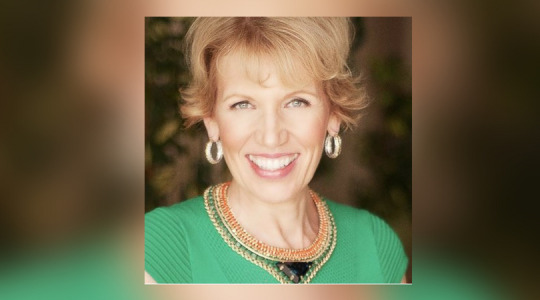
Mari Smith has earned titles such as “Small Business and Facebook Marketing Expert” and “Top Social Media Power Influencer”. She is definitely a big name in social media marketing. She focuses on social media training, consulting, and thought-leadership to help businesses increase reach, engagement, and conversions of ideal customers. She is the leading authority in Facebook marketing.
Find her at:
Website | Facebook | Twitter | Youtube | LinkedIn
21.) Tim Ash

Tim Ash is a digital marketing and conversion rate optimization expert and speaker. He is the CEO of SiteTuners, an agency that specializes on strategic growth acceleration, and author of Landing Page Optimization. Tim is well-versed in user-centered design, online behavior, neuromarketing and landing page testing. Companies like Google, Facebook, Canon, Nestle and Yahoo! have been beneficiaries of Tim’s web optimization strategies.
Find him at:
Website | Facebook | Twitter | LinkedIn
20.) Scott Stratten

Scott Stratten is an author of 5 best-selling business books, and owners of UnMarketing Inc. He and his wife have been speaking all over the world about the secrets to successful marketing. Companies such as PepsiCo, IBM, and Microsoft are among the many companies that have asked them for useful advices. Their books include UnBranding, UnMarketing, UnSelling and The Book of Business.
Find him at:
Website | Twitter | Facebook | Youtube | LinkedIn
19.) Justin Cutroni

Justin Cutroni is a web analytics expert. He is a Google Analytics Certified Partner and works with marketing and IT teams to develop processes needed to generate business insights and data. Justin is respected in the web analytics industry and has earned the title “analytics evangelist” by helping businesses incorporate data in making their decisions.
Find him at:
Website | LinkedIn | Twitter | Google+
18.) Avinash Kaushik

Avinash is an author of two best-selling books Web Analytics 2.0, and Web Analytics: An Hour A Day. He is also a digital marketing evangelist and co-founder of Market Motive, which provides online marketing education courses. He has also spoken on conferences, universities and large-scale companies. He is most popular in the field of digital marketing, and digital analytics.
Find him at:
Website | LinkedIn | Twitter | Facebook
17.) Heidi Cohen

Heidi Cohen is a marketer, professor, and journalist. She is best known for her work The Actionable Marketing Guide which sums up marketing insights on social media, content marketing and mobile. She also defined the marketing basics including branding and PR definitions.
Find her at:
Website | Facebook | Twitter
16.) John Rampton

John Rampton is a serial entrepreneur and influencer. He is also an active speaker and traveled all over the world to coach aspiring entrepreneurs. John is also passionate about teaching entrepreneurs the best startup guides for their businesses. He is the founder and CEO of Due, a company that provides merchant services and premium invoicing to help business owners get paid.
Find him at:
Website | Twitter | LinkedIn | Youtube
15.) Larry Kim

Larry Kim is the founder of WordStream, the leading provider of AdWords and CEO of MobileMonkey, Facebook Messenger’s leading marketing platform. Larry is an expert in pay-per-click advertising and has an in depth knowledge of what sells on the Internet. He focuses on advertising and product management.
Find him at:
Website | LinkedIn | Twitter | Facebook
14.) Jeff Bullas

Jeff bullas has been labeled as a content marketing influencer, social media marketing strategist, and a well-known speaker. Jeff helps businesses by digital marketing and the use of social media networks to grow. He knows how to work on social media channels to change the course of businesses leading closer to success.
Find him at:
Website | Twitter | Facebook | LinkedIn | Instagram
13.) Danny Sullivan

Danny Sullivan was a journalist by heart who inquired of the digital and search marketing place from 1996 to 2017. He has worked with Google and studied about the complexity of searches and provided solutions to issues that arose regarding it. He is an expert in search engines and has written about it in different pages like Search Engine Land, MarTech Today, and Marketing Land.
Find him at:
Website | Facebook | Instagram | Twitter | LinkedIn | Youtube
12.) Barry Schwartz

Barry Schwartz owns a consulting firm Rusty Brick which focuses on identity and branding, website and mobile development, marketing technology and custom web software. He also runs Search Engine Roundtable, a website dedicated to the most interesting threads that take place in Search Engine Marketing forums. His team specializes in helping businesses decrease costs and increase sales.
Find him at:
Website | Youtube | LinkedIn | Twitter | Facebook
11.) Rand Fishkin

Rand Fishkin is best known in the field of search-engine optimization tools, resources and community. He was the CEO and co-founder of SEOmoz, a consulting company and software business. Rand focuses on marketing, entrepreneurship, and spread of influence in his new website Sparktoro. His team’s mission is to make websites, blogs, podcasts and social accounts reach its audience better. He also wrote Lost and Founder: A Painfully Honest Field Guide to the Startup World.
Find him at:
Website | Facebook | Twitter | LinkedIn
10.) Marcus Sheridan

Marcus Sheridan is an award-winning speaker and labeled as “web marketing guru” by the New York Times. He is the founder and president of The Sales Lion, a consultancy firm dedicated to inbound and content marketing strategies. Marcus and his team is well-known for keynotes, workshops, sales/marketing coaching and HubSpot training. He wrote the books They Ask You Answer and Stop the Yawns.
Find him at:
Website | Twitter | Youtube
9.) Jay Baer

Jay Baer is a keynote speaker, author, digital expert, and a trusted advisor to many brands. He is a winner of America’s Best Marketing Podcast and belongs to the Marketing Hall of Fame. He is the founder of Convince & Convert and five multi-million dollar companies. Jay is focused in digital marketing strategies that attract customers and retaining them. His company has great experience with content marketing, social media, digital analytics, email, and organic search. Some of his books include Hug Your Haters, Youtility and The Now Revolution.
Find him at:
Website | Podcast | Twitter | Facebook | Instagram | LinkedIn
8.) Zac Johnson

Zac Johnson is a well-known entrepreneur, online marketer and blogger. He is the owner and founder of several blog sites such as Blogging.org. and ZacJohnson.com. He teaches his audience how to make money online through affiliate marketing, blogging, lead generation and sale of expertise. He has online courses and website tutorials to help you earn millions of dollars while connecting to businesses and brands across the world.
Find him at:
Website | Twitter | Facebook | Google+
7.) Pat Flynn

Pat Flynn is a blogger and podcaster that takes entrepreneurship in a whole new level. He makes income experiments and shares the results with his audience. Flynn popularized the idea of “income reports” and detailed how much his business makes every month. He is committed to educate readers about the importance of such reports in their businesses and teach proven strategies to optimize online businesses for passive income. His expertise includes online entrepreneurship, digital marketing and lifestyle businesses. He also authored the books Let Go, and Will It Fly? How to Test Your Next Business Idea So You Don’t Waste Your Time and Money.
Find him at:
Website | Youtube | Twitter | Facebook
6.) Ramit Sethi

Ramit Sethi is an American finance advisor and entrepreneur. He is the founder of Growthlab.com, an end-to-end online marketing resource, and IWillTeachYouToBeRich.com. He is also best known for his finance book I Will Teach You To Be Rich which became a New York Times bestseller. As an entrepreneur, he has taught thousands to manage their personal finances and to become rich. Ramit has also released multiple courses online such as, Earn 1k, Zero to Launch, Call to Action and Accelerator.
Find him at:
Website | Twitter | LinkedIn | Instagram
5.) Darren Rowse

Darren Rowse is renowned in the field of blogging. He is a blogger, speaker, consultant and founder of several blogs and blog networks including b5media, ProBlogger, Digital Photography School, and SnapnDeals. His website, ProBlogger, concentrates on helping bloggers add income streams to their blogs. He is the man you should come running to if you have questions about blogging. Darren has also authored a book called ProBlogger the Book which contains an ordered version of his blog specifically written for new bloggers.
Find him at:
Website | Twitter | Facebook | Google+ | LinkedIn | Podcast
4.) Brian Clark

Brian Clark is the expert you’ll need in content marketing. He is the founder of Copyblogger, CEO of Rainmaker Digital, host of Unemployable, and curator of Further. Brian is focused with creating valuable information that attracts attention, drives traffic and builds businesses. His digital commerce company, Rainmaker Digital, helps more than 200,000 customers by using useful content, smart copywriting and exceptional products and services. Brian Clark guarantees his customers the kind of audience-focused content that will help them achieve their business goals.
Find him at:
Website | Twitter | LinkedIn | Facebook
3.) Neil Patel

Neil Patel is a New York Times bestselling author, a top marketer, and a brilliant entrepreneur recognized by President Obama and the United Nations. He is the founder of Crazy Egg, Hello Bar, and KISSmetrics. His website focuses on helping clients grow traffic on their websites by using different tools. His blog covers entrepreneurship, conversion optimization, marketing and sales. He also helps companies like Amazon, NBC, GM, HP and Viacom grow their revenue. He authored the book Hustle: The Power to Charge Your Life with Money, Meaning, and Momentum.
Find him at:
Website | Twitter | Facebook | LinkedIn | Youtube
2.) Guy Kawasaki

Guy Kawasaki is an American marketing specialist, evangelist, author and speaker. He has spoken to clients such as Apple, Nike, Google, Microsoft, Audi and countless number of associations. He was one of the people behind the marketing of the Macintosh computer line and popularized “evangelism marketing” or an advanced type of word-of-mouth marketing. Currently, Guy is the chief evangelist of Canva, an online graphic designing tool, and a brand ambassador for Mercedes-Benz. Some of his books include The Art of the Start 2.0,The Art of Social Media, Enchantment, and nine other books.
Find him at:
Website | Twitter | YouTube | LinkedIn | Google+
1.) Seth Godin

Seth Godin is a world-renowned author, blogger, and entrepreneur who always creatively come up with marketing ideas. He is best known for his speakership in seminars and more than 60,000 people have taken his online marketing courses. A teacher at heart and a writer, he has more than 18 worldwide best sellers books in the course of his career. His blog, which is updated daily, talks about his life experiences that may help aspiring entrepreneurs.
Find him at:
Blog | Podcast | Website | Twitter | Facebook
Earning the title of an expert is not easy. These people went through all sorts of circumstances to get to where they are right now. The road was definitely rocky and curvy, but they managed to conquer it all- and has grown familiar with it.
Read also:
Why Hire Digital Marketing Agency vs Traditional Digital Marketing Agency
If there’s one thing to learn from them, that is dedication and commitment. Success doesn’t happen overnight. You have to work for it steadily.
Your time to shine might not be now, but for sure the light is at the end of the tunnel. The people above will help you in your journey to success. Follow their footsteps and soon you will be standing in their place too.
The best way to learn is to learn from the best.
More informative articles like this at ESTRAT website.
0 notes
Text
300+ TOP GOOGLE ANALYTICS Interview Questions and Answers
GOOGLE ANALYTICS Interview Questionsfor freshers and experienced :-
1. What is Google Analytics and main purpose of Google Analytics?
Google Analytics is a web analytics software used to track the traffic on the website. The major purpose of analytics is to analyse the information about the site and make decisions to improve the site traffic and revenue.
2. What is key benefits of Google Analytics ?
Helps you understand customers by Geo. Which Geo brings you the most customers.
Helps you segment the business in the more optimized way.
Helps in understand the behaviors of which term bringing more traffic to the website.
Helps in understanding the visitor’s arrival to your website is through some other website or through the search engine.
3. What is a session?
If a user visits a website the session is started, the session can last for 30 minutes if no activity is done. A new session is started in analytics if your source is changed. For example if a user visits from organic results, one session is started and same user open a same site from PPC, then next session is started.
4. What is meant by KPI in Analytics?
KPI means Key Performance Indicators. These metrics helps the business to analyse their websites based on the business objective. Example of KPI: Users, Sessions, Avg Time, Bounce Rate, Conversion rate etc.
5. What are segments in Analytics?
Segments are used to define the subset of data in overall data. For example we can create a segment for organic, paid traffic etc.
6. Can the data change once Google analytics has processed the data?
No, it cannot change.
7. What are events in Google Analytics?
Events are user interactions with content that can be tracked independently from a web page or a screen load. We can create custom events to track downloads, play buttons and ajax load etc.
8. What are goals and how many goals can we create in analytics?
A goal defines a completed user activity, called a conversion that contributes to the success of your business. We can have only 20 goals per one web property
9. What is benchmarking?
This metric helps us to compare our data with the market aggregated data from relevant industry who share the data anonymously.
10. What is Bounce Rate?
The percentage of users who leave the website without visiting any other page is bounce rate. Higher bounce rate is very negative for website, as users are not showing interest in the site.
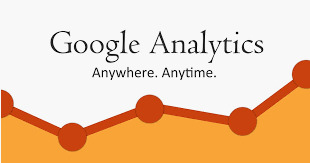
GOOGLE ANALYTICS Interview Questions
11. What is the optimal bounce rate for website?
A good bounce rate is around 30% for websites.
12. What is Funnel in Goals ?
Series of pages which are expected to be accessed to reach the destination page to complete the goal is defined as funnel. For example a e-commerce website funnel will be like.
Add to Cart => Signin/Singup => Add Address => Make Payment => Thankyou Page.
13. Can we delete the goals after created them in Google Analytics?
No, we cannot delete the goal. But we can stop recording the goal by disabling the goal.
14. What are custom Events in Google Analytics?
To track the changes in a specific metric, we can set parameters which can trigger and custom event is created.
15. What is mean by Users in Analytics?
It defines the users who have visited the site at least one time in given time frame.
16. What is meant by Cohort Reports?
A cohort is a group of users who share a common characteristic that is identified in this report by an Analytics dimension.
17. What is use of Acquisition Reports?
We can analyse the source of our traffic to the website. Ex: Organic, PPC, social etc.
18. What is “Not Provided” data in Keyword Reports?
The keywords data which is blocked by Google and will not show in Analytics reports. Most of the website is unable to find the exact keywords for which a conversion was happened.
20. What is meant by Experiments?
Experiments tool is used to measure the results of campaigns with different design/view. It is also called as A/B testing.
21. What is attribution in Google Analytics?
An attribution model is the rule, or set of rules, that determines how credit for sales and conversions is assigned to touch points in conversion paths. In other words the attribution can help us to know the proper touch points in the funnel.
22. What is Real-time data in Analytics?
With this tool we can analyse the present traffic on the site.
23. Can we separate the users based on devices?
Yes we can segment the data based on devices. Under audience reports we can analyse this data.
24. Can we track Google AdSense data in Google Analytics?
Yes using Publisher tab we can connect our Google AdSense with Google Analytics
25. What is Exit rate in Analytics?
For all page views to the page, Exit Rate is the percentages that were the last in the session. Which means we can analyse the % of users who left the site from particular page?
26. What is meant by Average Load Time?
The avg. amount of the time taken by the website to load it in the browser. The website must be loaded as fast possible for quick loading.
27. In analytics reports we can sometimes get a lot of spam data from spam sources/domains, how to deal with this issue?
We can set the filters to avoid all this data from spam sources/domains.
28. Auto tagging is used in which type of traffic?
Auto tagging is a feature used in Adwords Campaign Traffic.
29. What is the formula of ROI?
ROI stands for Return ON Invest
The formula of ROI is: (Revenue – Cost) / Cost
30. What is E-Commerce tracking in Google Analytics?
Ecommerce tracking is a snippet of code you can include on your site or app to collect transaction data like product sales, purchase amounts, and billing locations, and connect it to your Google Analytics account.
31. What is category in Google Analytics?
The Category is at the top of the hierarchy. It’s a way to bundle user activity together.
“Slideshow”, “Videos”, and “Downloads” are good examples of categories, though you can be as specific or broad as your content requires.
32. What is Action in Google Analytics?
The action is literally what the user does. For example let us consider a video player the actions performed on this are play, pause, share, get embed link, etc.
33. What is Label in Google Analytics?
Label Provides a bit more information about the user’s action.
34. What is Search Console and how to link with Google Analytics?
Search Console can help you understand how users find your site through Google search.
Identify ways to attract more attention to your site and prioritize development efforts.
To know more about link your Google analytics with search console: Click Here
35. What are Network referrals in Google Analytics?
Identify the networks and communities where people engage with your content. Learn about each community, and identify your best performing content on each network.
36. Do Google Analytics will track Actual click path of individual visitor or not?
Yes, Google Analytics will track each and every click and click path of each and individual visitor.
37. What are cookies in analytics?
Cookies are the text files which are stored on the client computer.
38. Difference between Clicks and Visits?
Click is an action performed on a site or a particular product.
Users are spending time on site is called visit.
39. What is the use of Track Page View in Google Analytics?
Track Page View is used to register a page view in Google Analytics
40. What is Demographics in Google Analytics?
Demographics in Google Analytics show the age group of people who is visiting our website.
41. What are UTM parameters?
UTM stands for Urchin Tracking Module. Parameters that are added to url’s in order to tgrack organic traffic referral traffic and cpc(Cost Per Click) traffic.
42. What is Assisted Conversion?
When one traffic source results in later goal completion through another traffic source.
43. Why it is useful to assign a value to your Goal in Google Analytics?
It is very useful to assign a goal value in Google Analytics that will track actual cost from your conversion
44. How can you see where the visitors are clicking most on your website?
This can be identified or seen with the help of In-Page Analytics.
45. How can you find the UA tracking code?
U.A stands for Universal Analytics. The Universal Analytics tracking code can be found in the admin section of web property.
46. What are the different elements of Event Tracking in Google Analytics?
There are three elements in event tracking. they are
Categories
Actions
Labels
47. What is RPC in Google Analytics?
RPC stands for Revenue Per Click is a metric available in Google Analytics for using of E-Commerce tracking.
48. How to identify the top or popular pages on my website in Google Analytics?
To identify the top landing pages on our website by using google analytics got to behavior section. You can find the top 10 trending content on your website.
49 .How can you identify the keywords that are sending paid traffic to my website?
The keyword column displays traffic that are coming from organic and paid.
50. What is event tracking in Google Analytics?
Event tracking includes the Google Analytics code customization and it is used to track a specific occasion or an action on a website like a tick, download of documents, files, software’s etc.
51. What is a Search Depth in Google Analytics?
Search Depth in Google Analytics is the average number of page visitors viewed after performing a search on site.
52. What are cookies in analytics?
Cookies are the text files which are stored on the client computer.
53. What is Cohort Size?
Cohort determines time frame that is used to determine the size of each cohort.
54. How many types of custom Reports in Google Analytics?
There are 3 types of custom Reports in Google Analytics.they are
Explorer
Flat Table
Map overlay
55. What is Explorer?
A Standard Google analytics report that consist line graph and data table that include dynamic the elements like search, sort and secondary dimensions.
56. What is Flat Table?
A static sortable table that displays that data in rows.
57. What is Mapoverlay?
A Map of the world of different regions and countries displaying in darker colours to indicate the traffic and engagement Volume.
58. What is site search button?
If you have a site search button on your website. You want to know what the people are searching for when they come to your site.
This is mainly useful for E-Commerce site.
59. What is Cohort in Google Analytics?
Cohort means a group of user who share the same content with same time.
They are four sections
Cohort type
Cohort size
Metric
Date range
60. What is Cohort type?
The cohort type corresponds to table column that includes total number of users in cohort, currently only one position is available that is acquisition date.
61. What is meant by conversions and how will you track conversions through GA?
Conversions happens when any predefined goals are accomplished thereby generating ROI to the business. In other words if the user take any desired action on the site, its considered as conversion. For example filling the form, purchasing a product etc. We use Goals in Analytics to set the conversion tracking.
62. Role of KPI in Google Analytics?
This is the common Google analytics Interview Questions asked in an interview. KPI stands for Key Performance Indicator. It helps in tracking the important things to a business. For eg: No. of visits, no. of clicks, sessions, returning users, first-time visitors, bounce rate etc. KPI helps you track your business SLA’s as well.
63. What is a Cohort in Google Analytics?
Cohort refers to a set of customers who shares the same characteristics as they have same bought the same kind of products, they have the same purchase date etc. It helps an organization to analyze group wise behavior by their metrics and revenue.
64. Does Google Analytics support real-time data?
Yes. With Google Analytics we can observe the present traffic to a webpage. It can give an update about data traffic, insights, reactions happening on your webpage for every moment. This can help the organization drive the promotional campaign on Twitter or any other public websites.
65. Explain A/B testing in terms of Google Analytics.
A/B testing is a great way to identify and fix the improvements that can result in the major impact on your online success.
E.g. You have two variations of your webpage. And you divided the traffic equally 50%-50% towards both the pages. Suppose outcome of Analysis of both the pages came out to be: People are more fascinated or more reactive towards the first page rather than the 2nd page. Hence you finalize on your 1st page, as that is more effective.
So, the decision made here is not based on intuition. Instead, it’s a fact-based decision.
Google Analytics uses this A/B testing to improvise on the website content management.
66. What do you know about the bounce rate? What’s the optimal value of bounce rate for a website?
Bounce rate is the measure of the number of customers who leave the website without visiting any other page. The higher the bounce rate, the negative is the response of customers.
Google Analytics focuses on two things: Bounce rate of a webpage & Bounce rate of a website.
30% bounce rate is considered normal. 30% to 70% is slightly worrisome. Above 70% means people are not sticking to your website and you need to optimize your website immediately.
High bounce rate can bring the conclusion which is as follows:
Page quality is not that good to engage people on the website.
Purpose of a page not matching with the demand of the audience.
Visitors have not found the extent of the information that they were looking for.
67. Can you explain events in Google Analytics?
This is the most popular Google analytics Interview Questions asked in an interview. An event is a word referred for collecting the interaction with the web page or screen load.
Few examples are:
Click
Gadgets
Downloads
Flash elements
Video plays etc.
The event has 4 components:
Category
Action
Label
Value
68. Explain the terms: Dimensions & Metrics in Google Analytics.
The basic unit of any analytical report is comprising of dimensions and metrics.
To represent a table, dimensions are arranged in rows, and metrics are arranged in columns.
Dimensions are the data which is attributed such as city, browser, product type, geo, country etc. Metrics are the quantitative measurement such as bounce rate, session duration, number of events etc.
GOOGLE ANALYTICS Questions with Answers Pdf Download
Read the full article
0 notes
Text
PPC Interview Questions
1. What are Adwords?
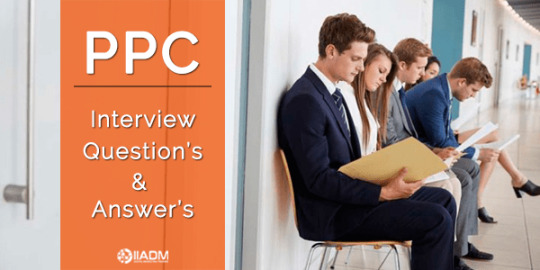
Promoters spot offers on specific watchwords which causes their commercial to be shown by Google. Actually, watchwords are the premise of an Adwords account.
It is a kind of compensation for every snap publicizing procedure, which enables organizations and administrations to get highlighted in the Google Search Network and Google Display Network. Adwords are normally catchphrases that have a succinct book connected to it.
2. How does Adwords help organizations?
As and when the client searches utilizing the important catchphrases, the notice gets showed. It causes organizations to take advantage of potential purchasers. A business searching for the quicker outcome would ordinarily depend on AdWords more. It helps organizations by getting leads and traffic at an a lot quicker pace in contrast with other web index strategies. It is likewise an incredible spending sparing advertising decision.
3. What is implied by Ad Trafficking?
It is the arrangement procedure of the promotion so as to create the best outcome. An advertisement dealer, in interview with the customer builds up, a promotion crusade which would enable the business to tap in whatever number clients as could be expected under the circumstances.
4. How does Ad rank work?
The promotion rank is fundamental as it means what number of snaps you are getting. An advertisement rank relies upon the expense per snap or CPC, the quality score and the normal outcome. It considers different elements like gadget, area, time, search terms and the preferences. A decent promotion rank methods the advertisements will show up on a pertinent channel as and when required. Poor advertisement rank may lead the promotion to not getting showed by any means.
5. How might you best utilize Ad gathering?
A promotion gathering gives the web crawlers a chance to all the more likely order your promotions and furthermore gives you a lot of authority over whom to publicize to. Your introduction can be arranged appropriately helping you get the best outcome.
6. What do you have to do to get higher transformation rates?
Conceivable answer:
There are a few different ways to get a decent transformation rate. The initial move towards it would distinguish the torment focuses. A portion of the simple approaches to support transformation rates are utilizing important pictures, testing the whole client experience (directly from the advertisement introduction to the presentation page), and testing the registration page.
7. What steps are should have been taken to improve the quality score?
So as to decide the expense per click, a quality score is alloted. It relies upon the importance just as the nature of the watchwords you have been utilizing. Presentation page experience assumes a pivotal job in this entire situation.
8. What number of characters are permitted in Adword advertisements?
It very well may be up to 80 characters. Out of which two features of 30 characters each are permitted alongside a portrayal line, which must be dense inside 80 characters. Spaces are incorporated into the character tally.
9. What is the most ideal approach to depict CTR and how would you ascertain it?
CTR or active clicking factor is a report card on how your advertisements are performing. So as to figure there is a basic recipe which is snaps partitioned by impressions.
10. What is change following in Google Ads?
Transformation following in Google Ads gives you a chance to discover what occurs after a client taps on your promotion. It encourages you recognize how well your advertisement crusade is performing and offers information identifying with lead age, deals, downloads, email recruits, and other key activities for your business. Along these lines it causes you streamline your catchphrases, offers, promotion content, and so forth.
11. What is comprehended by watchwords? What number of kinds of watchwords are there?
Catchphrases are the words and expressions that help clients explore to the site page of the business refering to it. It enables the clients to discover applicable administrations or items and organizations who use them so as to get the clients coordinated to their pages.
Extensively, there are 3 kinds of catchphrases - long-tail, short-tail, and medium tail. Some different sorts of watchwords are plan focusing on, client characterizing, item characterizing, geo-focusing on, present moment, long haul, and LSI. In light of how they are utilized, they help make website pages enhanced.
12. Which alternative can't be changed once the Google record is made?
After the record has been made, the client may change the time zone once. Be that as it may, he can't adjust or change the money he picked. These subtleties are utilized to decide how a client is charged.
13. What is the utilization of recurrence topping?
This strategy decides how often a specific client sees a particular promotion. It force or occupy the client in any capacity.
14. Would you be able to name some adwords promotion augmentations?
Expansions are extra data to enable promotions to perform better. It tends to be either mechanized or manual. Some mechanized augmentations incorporate merchant rating, robotized call, past visit, and so forth. Instances of manual expansions are App, area, message, cost, and so on.
15. Why did you choose PPC industry?
Ans: This is one of the most common PPC interview questions you will face during the interview! When the interviewer asks this question, he/she wants to know more about you as a candidate and why you chose to work in the field of Pay Per Click Marketing and Advertising. You need to tell them about your passion and your desire to work in the industry in the future. It would be great if you tell them about your back story with regard to what makes you tick as a candidate. Also, a good response could be to say that you are aware that the industry is extremely challenging and this is what attracts you. Show that you don’t want a boring job and prefers one which would challenge you on a daily basis.
16. What as indicated by you is the most significant measurement to check the exhibition of a specific battle?
Conceivable answer 1
Distinguishing and estimating every battle's KPI's or Key Performance Indicators are the most ideal approach to follow accomplishment for advertisement crusades. I bring extraordinary consideration into estimating how industrious agony focuses are getting influenced after the dispatch of the battle.
Conceivable answer 2
To quantify the accomplishment of a crusade, I investigate complete traffic age and its wellsprings, CTR or Click Through Rate, CPC or Click Per Click esteem. I likewise consider different measurements identified with change, for example, CVR, CPL, normal online visits, ricochet rate, time spent by watchers on page and number of returning clients.
17. What is comprehended by API?
Application Interface Service enables engineers to cooperate straightforwardly with Google Ads Server. It guarantees best use of the advertisements, particularly for those with huge or complex Google Ads records and battles. It gives more capacity to the promoters as they can alter advertisements as indicated by their need.
18. Other than CPC which offering strategy would you like?
In spite of the fact that CPC is a famous strategy to convey outbidding, CPM or Cost Per Thousand Impression is likewise an incredible decision. It can likewise work with lower offers as the sponsor is charged per thousand impressions.
19. Would you be able to expand on the procedure of Google closeout?
The publicist chooses the most extreme spending he would designate for an advertisement. At that point Google considers the nature of the advertisement, the offering sum and the normal snaps. Contingent upon these elements Google figures out where to put the advertisement.
20. How might you upgrade greeting page quality?
Conceivable answer 1
There are a few different ways by which the nature of the greeting page can be improved. The page ought to be pertinent enough and not very hard to explore or get it. It ought to have an unmistakable call of activity message.
Conceivable answer 2
One extraordinary approach to help the exhibition of the point of arrival is to include applicable pictures. Infographics are likewise known to work great. Nearness of such a large number of connections can quite influence the nature of the greeting page. Care ought to be taken to consolidate just important data and related assets. They ought to be appropriately lined up with the business objective in the point of arrival.
21. By what means can negative watchwords be utilized?
The best bit of leeway of utilizing negative watchwords is the way that the promotions are just appeared to a separated crowd or watcher. Contingent upon the applicable pursuit question of a client, advertisements are appeared to them rather than everybody looking with the required catchphrases.
22. What is the way toward evaluating Return Of Ad Spend?
So as to gauge the arrival of advertisement spends, a basic proportion is estimated. The proportion is to assess what amount is spent in extent to the deals. For example, for each 1000 INR spent, in the event that 5000 INR deals are made, at that point the ROAS is normally 1 is to 5.
23. Would you be able to utilize trademark terms for AdWords?
Trademark terms can be utilized in advertisement message by the trademark proprietor and outsiders that are expressly approved by the trademark proprietor. Be that as it may, trademark terms utilized by unapproved gatherings are viewed as trademark infringement and can be brought somewhere around Google. There are, be that as it may, exemptions for nonexclusive use, and so forth.
24. What is the best technique to enhance your CTA in AdWords?
Conceivable answer 1:
CTA or source of inspiration is the most essential piece of the AdWords. It should be arranged cautiously. Evading vagueness and keeping the CTA clear and fresh aides extraordinarily in the exhibition of the AdWords.
Conceivable answer 2
A decent CTA is the most urgent part of AdWords. All relies upon how the CTA is developed. A well-organized CTA ought to make no faltering in the psyche of the client. Consequently, utilizing influential language is in every case increasingly welcome. It should summarize the following stage and rule out uncertainty.
25. How would you measure PPC achievement? Which PPC instruments would you use to achieve that?
The most ideal approach to learn the PPC (pay per click) achievement rate is to discover the CTR or Click Through Rate. It tends to be discovered by partitioning clicks by impression. Some valuable devices for this reason for existing are WordStream Advisor, AdWords Performance Grader, Google Analytics, Twitter investigation and obviously, Google Ads Editor.
0 notes
Text
Top 10 Digital Marketing Institutes in Pune
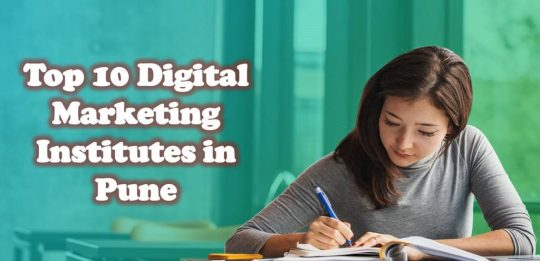
Before analyzing the list of top 10 Digital Marketing Institutes in Pune a bare idea of the Digital marketing training sector will be timely.
The list of Digital Marketing Training Centers in Pune amply reflects the action in the fast-growing sector where the shortage of well-trained personnel is very apparent.
Advanced Digital Marketing Course Institutes in Pune are trying to fill that vacuum.
Website searches will reveal the best Digital Marketing Institutes in Pune. Such an effort is essential because training institutes vary in reputation in the matter of delivering effective course content to the satisfaction of the bulk of the students.
In any best institute for Digital Marketing Course in Pune, good trainers are the backbone. Given that Digital Marketing Training’s classroom training mode is the most sought-after format, trainers play a vital role in making an institute appear better than others.
As far as Digital Marketing Course content is concerned, staying industry-relevant in the content is most important to enjoy good demand. Therefore the digital marketing course details must match industry standards and requirements.
The best part is Digital Marketing Course in Pune fees is reasonable. Certifications from third parties and authority bodies will help in boosting expertise of the candidates and stamp value to profiles.
The Digital Marketing Courses in Pune neatly combine training programme with projects for hands-on experience.
Many of the Digital Marketing Institutes in Pune are evolving as Top Digital Training Brands. They instil trust in the minds of aspirants adding a sense of assurance over the best returns on the course fees and time spent.
Courses like Digital Marketing Certified Associate (DMCA) are good in joining the digital marketing field at base and mid levels.
Instructor-led training on the following core topics are available at the Top 10 Digital Marketing Training Institutes in Pune.
SEO
Web analytics
Email marketing
Social media marketing
Content marketing
Conversion optimization
PPC
Mobile marketing
The hallmark of reputed Institutes in Pune is the post-course support. A profusion of project work is helping candidates in gaining hands-on experience in online campaigns, web analytics, and social media marketing
The courses also prepare for the following tests
Google AdWords
Youtube marketing
Google analytics
Scope of DIGITAL MARKETING for Business | Career Opportunities and Salary in DIGITAL MARKETING
Digital Skills Gap
The high demand for people with digital marketing skills will be felt for years to come as numbers of the online population are growing.
There is the awareness that “Digital Marketing’ is an ace promotional strategy in expanding business. The scope is widening as it is not restricted to online businesses any more as brick and mortar businesses are also finding space in it.
In choosing Digital Marketing Training Institutes in Pune a checklist of course content, faculty, placement assistance, practical training, certifications, and project training assumes importance.
As a dynamic field, Digital Marketing’s concepts are changing and staying away from outdated modules is the best way for aspirants.
Top Digital Marketing Institutes in Pune continue to help enterprises by supplying qualified Digital Marketing professionals.
Best Out of Top 10 Digital Marketing Institutes in Pune - Expert Training Institute

Module
33
Installment
yes
Website
https://www.expert-seo-training-institute.in
Brochure
https://www.expert-seo-training-institute.in/downloads/digital-internet-marketing-course-curriculum.pdf
Fees
34,990
Google Rating
4.6
Facebook Rating
4.7
Established In
2012
Location
178 Jai Apartment, Sector-9, Rohini
Duration
20 Weeks
Mode
Classroom
Free Hosting
yes
Validity
1 year
Classroom Videos
yes
PPT Notes
yes
Adword Assistance
yes
1st Out of Top 10 Digital Marketing Institutes in Pune - Victorious Digital
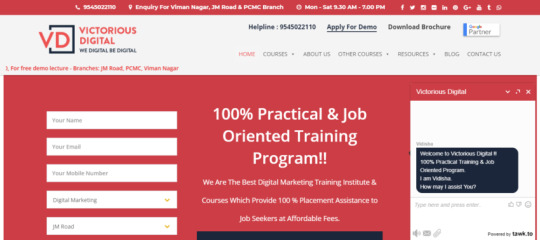
Module
31
Installment
N/A
Website
https://www.victoriousdigital.in/
Brochure
N/A
Fees
35000
Google Rating
4.9
Facebook Rating
4.9
Established In
2015
Location
Office No. 310, Om Chambers, Above Panchali Hotel, Jangali
Maharaj Rd, Shivajinagar, Pune, Maharashtra 411005
Duration
45 days
Mode
Classroom
2nd Out of Top 10 Digital Marketing Institutes in Pune - School of Digital Marketing

Module
30
Installment
N/A
Website
https://www.schoolofdigitalmarketing.co.in/
Brochure
N/A
Fees
30000
Google rating
4.7
Facebook rating
4.6
Established in
2014
Location
Office No.102, 1st Floor,
Eiffel Square Building, Opp Tilak Smarak Mandir,, Lokmanya Bal Gangadhar
Tilak Rd, Sadashiv Peth, Pune, Maharashtra 411030
Duration
40-50 days
Mode
Classroom
3rd Out of Top 10 Digital Marketing Institutes in Pune - Digital Trainee
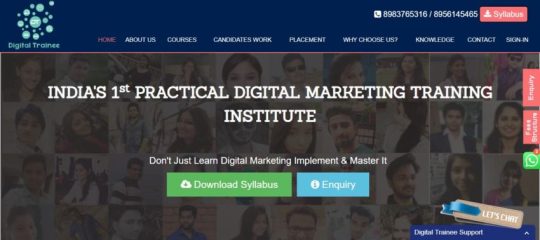
Module
30
Installment
N/A
Website
https://digitaltrainee.com/
Brochure
Yes
Fees
40000
Google rating
4.9
Facebook rating
4.9
Established in
2016
Location
2nd Floor, 7/3, Manohar
Apartment, Opposite To PNG Jewellers Near Nisarg Hotel, Nal stop, Karve Rd,
Erandwane, Pune, Maharashtra 411004
Duration
2 months
Mode
Classroom
4th Out of Top 10 Digital Marketing Institutes in Pune - NSDM India

Module
18
Installment
N/A
Website
https://www.nsdmindia.com/
Brochure
Yes
Fees
20000
Google rating
4.6
Facebook rating
4.7
Established in
2015
Location
872,
Saikrupa, 2nd Floor Opposite Sane Dairy, Bhandarkar Rd, Deccan Gymkhana,
Pune, Maharashtra 411004
Duration
3-4 months
Mode
Classroom
5th Out of Top 10 Digital Marketing Institutes in Pune - BizCode Digital
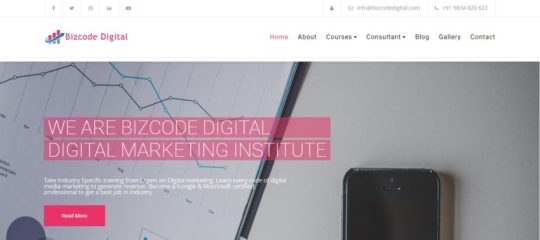
Module
6
Installment
N/A
Website
http://www.bizcodedigital.com/
Brochure
Yes
Fees
15000
Google rating
4.8
Facebook rating
4.7
Established in
2017
Location
Lloyds Chambers, Block No 3,
Office 507, Maldhakka Chowk, 409, Mangalwar, Peth,, Pune, Maharashtra 411011
Duration
2 months
Mode
Classroom
6th Out of Top 10 Digital Marketing Institutes in Pune - Training Institute Pune
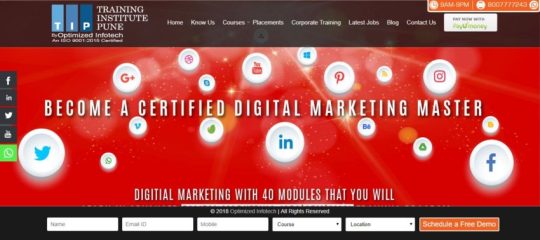
Module
40
Installment
N/A
Website
https://www.traininginstitutepune.in/
Brochure
N/A
Fees
50000
Google rating
4.8
Facebook rating
4.6
Established in
2014
Location
C 13-B building, Shreenath
Plaza, Dnyaneshwar Paduka Chowk, Fergusson College Road Shivajinagar Pune,
Pune, Maharashtra 411005
Duration
3-4 months
Mode
Classroom
7th Out of Top 10 Digital Marketing Institute in Pune - LIPSINDIA

Module
16
Installment
N/A
Website
https://www.lipsindia.com/
Brochure
Yes
Fees
30000
Google rating
4.8
Facebook rating
4.9
Established in
2011
Location
Above Intuition Labs B-, Lane
No D, RagVilasSociety, Pune, Maharashtra 411001
Duration
3-4 months
Mode
Classroom
8th Out of Top 10 Digital Marketing Institutes in Pune - SourceKode
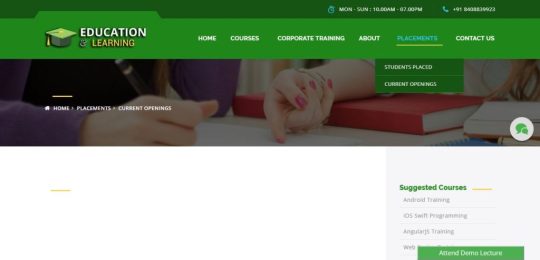
Module
17
Installment
N/A
Website
https://www.sourcekode.in/
Brochure
Yes
Fees
25000
Google rating
4.7
Facebook rating
4.8
Established in
2012
Location
Mohar
Complex, Prabhat Road, Dr Ketkar Rd, Behind Hotel Royalty, Erandwane, Pune,
Maharashtra 411004
Duration
65hrs + 36hrs
Mode
Classroom
9th Out of Top 10 Digital Marketing Institutes in Pune - Optimized InfoTech
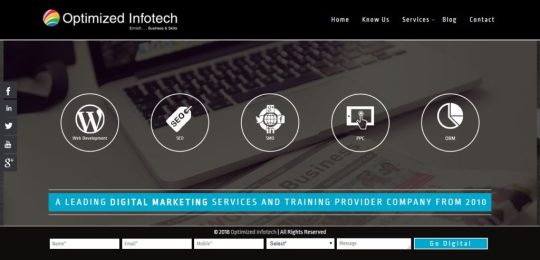
Module
8
Installment
N/A
Website
https://www.optimizedinfotech.com/
Brochure
N/A
Fees
15000
Google rating
4.3
Facebook rating
4.9
Established in
2011
Location
Office 203 Sai Ram Building
Above SUBWAY Restaurant, Paud Rd, Kothrud, Pune, Maharashtra 411038
Duration
N/A
Mode
Classroom
10th Out of Top 10 Digital Marketing Institute in Pune - Human Catalyst
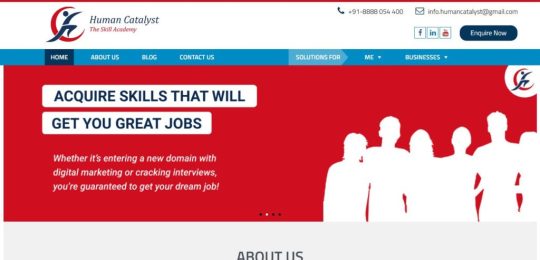
Module
25+
Installment
N/A
Website
http://hcsglobal.co.in/
Brochure
Yes
Fees
20000
Google rating
4.4
Facebook rating
4.9
Established in
2017
Location
22, Wing B, Manisha Blitz
Apt, Near Shankar Math, Hadapsar, Hadapsar Gaon, Pune, Maharashtra 411013
Duration
2 months
Mode
Classroom
See More Related Articles
Top 10 Digital Marketing Institutes in Agra
How To Choose The Best Institute For Digital Marketing
Top 10 Digital Marketing Institutes in Pitampura
Top 10 Digital Marketing Institutes In Rohini
Top 10 Digital Marketing Institutes in Noida
Top 10 Digital Marketing Institutes In Faridabad
Top 10 Digital marketing institutes in Gurgaon
Top 10 Digital Marketing Institutes In MP
Top 10 Digital Marketing Institutes in Delhi
Top 10 Digital Marketing Institutes In Lucknow
Read the full article
#Advanceddigitalmarketingcourseinstitutesin pune#Bestdigitalmarketinginstitutesin pune#Bestinstitutefordigitalmarketingcoursein pune#digitalmarketingcoursecontent#digitalmarketingcoursedetails#Digitalmarketingcoursein pune fees#Digitalmarketingcoursesin pune#Digitalmarketinginstitutesin pune#Digitalmarketingtraininginstitutesin pune#Internetmarketingcourseinstitutesin pune#Listofdigitalmarketingtrainingcentersin pune#Listoftop10digitalmarketinginstituteinpune
0 notes
Text
Google Adword PPC getting clicks but no sales
Everyone assume by doing PPC Campaign website sales will be started however, it doesn’t always go quite as planned. When you’ve invested lots of money in advertising on AdWords but are failing to see the difference in your bottom line, it’s a highly frustrating situation.
When your ad impressions are good and the clicks are happening, but those clicks are not transferring into sales, your campaign is costing you money for little to no return. It’s easy to blame this situation on a poor campaign, but could the problem actually lack of trust. Thousands of businesses advertise like you So Why customer choose you rather than competitors.
To build Trust you should use Fizfy Social Proof Notification tool and create Recent Sales, Recent Activity and Sales Count order Notifications , New Customers when see others are buying your products it increase trust and influence them to make purchases.
If your website is not getting conversions it means your website get visitors & traffic and they not show interest to buy your product that is critical you losing your money at ad campaigns because Visitors don’t trust your site and product at first instance.
This tool helps in increasing Sales, Conversions & Signup’s. We can monitor what customers are doing Clicks, Impressions, and Hover & Collect Data from Customers. Please create Account & send login details of Fizfy I will do all Campaign Setup at Fizfy & monitor Campaigns.
To build Trust you should use Fizfy Social Proof , Recent Sales order Notifications , New Customers when see others are buying your products it increase trust and influence them to make purchases.
List of Fizfy Social Proof Notification Widgets:
1. Recent Activity
2. Social Sharing
3. Button Popup
4. Cookie Notice
5. Video Notification
6. Call in Action
7. Coupon Code
8. Social Widget
9. Fizfy Collector
10. Emoji Ratings
11. Email Subscriber
12. Callback Collector
13. Feedback Collector
14. Mail Collector
15. Text Collector
16. Testimonials
17. Subscriber Collector
18. Recent Sales
19. Sales Count
20. Active Visitors
21. Informational Bar
22. Collector Bar
23. Coupon Bar
24. Button Bar
25. What’s App
26. Messenger
27. Viber
28. Wechat
29. Telegram
30. Google reviews
31. Facebook Reviews
32. Glassdoor Reviews
33. Yelp Reviews
34. Capterra Reviews
35. TrustPilot Reviews
36. Trip Adviser Reviews
37. Customer Reviews
38. Snapchat
39. Instagram
40. Line
Here is Social Proof Website you can try it: https://fizfy.com/
#PPC ADS#Google Adword#Google Adword PPC getting clicks but no sales#PPC getting clicks but no sales
0 notes
Text
How SEO Marketers Help You Attain A Strong Position In The Drug Rehab Industry?
You own a rehab center but functioning without a marketing plan? Using the old tactics like purchasing rehab leads and PPC can only put your money flushing through the drain.
One rehab patient for a 30 day diagnosis program can bring in almost $6000 – $30,000. When it comes to 90 day programs, the entire average price can range from $12,000 – $60,000.
$35 billion worth industry on an annual basis, you can expect to compete with national brands as well as lead generation indexes. Getting hands on sound rehab marketing from professionals is very important as it determines how long you can expand the phone calls, branded engagements and website visitors.
Drug Rehab Marketers & SEO
Owners or digital marketers of drug rehab programs must invest in sound digital marketing strategies for enhancing the organic search existence.
Now there are some questions that need to be addressed.
What is the starting point?
How can a drug rehab center get started for optimizing the search rankings?
Enhanced visibility & rankings
The best digital marketers are the ones who employ SEO for rehab facilities as it guarantees enhanced visibility. A rehab website that is well-optimized will always appear higher in SERPs.
Augmented authority & link building
The positioning of websites on SERPs is determined by Google via the website’s authority. This is one of the most effectively proven SEO tactics through wordpress development company. The quality and the number of links spotting to the website from various other sites on the Internet determine the authority.
Apprehending Customer Requirements
Considering all kinds of audiences is important when SEO marketers develop strategies for your drug rehab website. Your business might need to connect with:
Teenagers
Parents of youngsters
Addicted children
Teachers
People struggling with the habit of addiction
People who are in recovery stage
The question that you must now ask yourself is whether your website and services are fully prepared for offering guaranteed results to these audiences or not.
Thing to keep in mind are
Content creation needs to be done carefully. For instance, if the content speaks only to the one who is addicted, chances are that you will miss prospects for connecting with various other portions of the audience.
In a treatment facility, it is probable that various sorts of addiction are treated. Dedicated pages must be present for designer drugs, alcohol and opioids so that everybody can get hands on information they are seeking for competently and rapidly.
As you work with sound SEO marketers, you will see that they work on identifying typically used keywords for all sorts of audiences. The audiences will be then grouped into concepts & topics that link to each.
Studying the market
Let us look at the statistics
Search engines & particularly organic traffic is the most important foundation of web traffic
SEO is the most perfect place to put all your investments and efforts as there are restrictions by Google AdWords on Drug facility campaigns
80 to 90% users emphasize on organic results and neglect PPC or paid ads
Brands that are into blogging attain 435% better indexed pages that means they will attain more leads as well
Proven SEO tips must be followed as inbound leads charge 62% less in comparison to outbound leads
SEO leads carry a close rate of 14.7% which is definitely more than outbound leads
The alarming statistics on drug abuse are:
22 to 30% patients who have chronic pain & are stipulated opioids, misuse them
Approximately 5 to 7 % who exploit prescription opioids, shift to taking heroine
Key SEO factors for marketing you rehab
When working with one of your trusted SEO marketers make sure that he never neglects the basics. Some fundamentals that must be followed for attaining leads through SEO are:
Your website needs to be linked to Google Search Console
Make sure the sitemap is animatedly submitted to BWT & GSC
Run the website through tools like Screaming Frog for auditing redirects and checking broken links
Utilize Schema
Clean up the pages that report 404 errors
Manage duplicate contents across & within domains
Bottomline
Connect with us today as we have materialized as a thought leader in the space of addiction treatment. We can deliver dynamic websites for drug and detox rehab centers. Our content is SEO ready & we will help you in enhancing your search rankings. Call us today!
0 notes
Text
31 Advertising Statistics to Know
by Brad Smith
The marketing industry is constantly changing, and that’s particularly true of digital channels.
And while keeping up with new trends can be challenging, it’s more than worth the effort. Staying on top of what’s happening in the industry is the best way to keep up with your competitors and identify new strategies that will move you closer to your marketing goals.
With that in mind, we’ve compiled a list of 31 of the most important advertising statistics you should know to succeed in 2018.
Keep reading for the up-to-date information you need on PPC advertising, social media, mobile advertising, email marketing, video advertising, and what’s on the horizon for the marketing industry.
PPC Advertising Statistics
1. Google and Facebook still hold the largest share of total US digital ad spend, with 38.6% and 19.9%, respectively.
It should come as no surprise to experienced digital marketers that the majority of online advertising dollars go to Google and Facebook.
(Image Source)
That said, both of their shares are expected to decrease slightly over the next few years as advertising options on other platforms like Amazon and Snapchat increase in popularity.
2. Businesses make an average of $2 in revenue for every $1 they spend on Google Ads.
If you’re unsure of whether Google Ads (formerly known as Google AdWords) has the potential to generate revenue for your business, you’ll be glad to hear that businesses typically make double their investment on the platform.
And if you’re already running Google Ads campaigns, but not seeing these kinds of results, this could be a sign that your strategy needs some adjustments.
3. The average click-through rate (CTR) in Google Ads across all industries is 3.17% for the search network and 0.46% on the display network.
Measuring your success on any advertising platform can be challenging without concrete benchmarks, which is why it can be helpful to know the average CTR of other marketers’ campaigns.
It’s also worth noting that the average conversion rate for Google Ads clicks is 3.75% for search and 0.77% for display.
4. The average cost per click (CPC) in Google Ads across all industries is $2.69 on the search network and $0.63 on the display network.
Another metric to keep an eye on with any PPC campaign is the cost per click or CPC.
Within the Google Ads platform, the average CPC is over $2 higher for ads in the search results than for those run on the display network.
5. Omnichannel strategies drive an 80% higher rate of incremental store visits for local businesses.
Omnichannel advertising strategies like showing what’s in stock at nearby stores and increasing bids around business locations have become increasingly popular over the past few years.
And as this statistic demonstrates, they’re effective for generating incremental visits, or visits that businesses wouldn’t have received otherwise.
Social Media Statistics
6. Social media platforms capture 33% of the time users spend online.
Effective digital marketing requires reaching your audience where they already spend time online.
(Image Source)
And considering that today’s internet users spend a third of their time on social media, this is a channel most businesses can benefit from including in their strategies.
7. 4 in 10 internet users say they follow their favorite brands on social media.
Considering that 40% of internet users follow brands on social media, these platforms are natural choices for boosting customer loyalty.
Beyond that, 1 in 4 internet users also follow brands from which they’re considering making a purchase — meaning that even if they aren’t customers yet, the content you share with your followers could be the determining factor in whether they convert.
8. 37% of online shoppers say they use social media for “purchase inspiration.”
Over one-third of online shoppers use social media to “find inspiration” for a purchase.
(Image Source)
This is higher than any other form of online media, including retailer websites, price comparison websites, and multi-brand websites.
9. 96% of B2C marketers say that Facebook is a valuable marketing platform.
Facebook is still the platform of choice for the majority of B2C marketers.
(Image Source)
Among B2B marketers, though, LinkedIn has a slight edge, with 93% claiming it as the most valuable platform for their business.
10. The average session duration on Reddit is 4.83 minutes.
Although many advertisers overlook Reddit, its users spend more time per visit than users on Facebook (4.81 minutes), Instagram (3.05 minutes), Twitter (2.76 minutes), and Snapchat (1.79 minutes).
And while successfully marketing on the platform requires a strong understanding of its audience, it’s certainly possible — as illustrated by Findlay Hats, which made $28,000 in sales from one post.
Mobile Advertising Statistics
11. 69% of digital media time is spent on mobile devices.
Mobile advertising has become increasingly important over the past few years.
And considering that internet users now spend over two-thirds of their digital media time on smartphones and other devices, it’s unlikely that it’s going to slow down anytime soon.
12. The average mobile PPC ad click-through rate (CTR) drops 45% between positions one and two.
It’s not news to say that the higher a result or ad is on a results page, the higher its average CTR — but a 45% drop between the first and second ads is significant.
(Image Source)
This is much more dramatic than the drop on desktop computers and tablets, and important to keep in mind if you’re optimizing campaigns for mobile devices.
13. Appearing in mobile search ad results can increase brand awareness by 46%.
Making your target audience aware of your brand is an essential step in the sales process and one that mobile search ads can help with.
(Image Source)
In fact, 51% of smartphone users have discovered a new company or product when searching on their smartphones.
14. 82% of smartphone users consult their phones while in a store.
Mobile devices are becoming increasingly integrated into consumers’ daily lives.
Shoppers now not only use them to find stores in which they can make a purchase but also to continue researching their options once they’ve arrived at a store.
15. 84% of consumers between the ages of 18 and 29 are most likely to use a mobile device when shopping online.
Young online shoppers now overwhelmingly prefer to browse and make a purchase on mobile devices rather than desktop computers.
Consumers in the 18 to 29 age bracket lead this trend but are closely followed by 78% of consumers in the 30 to 44 group.
Email Marketing Statistics
16. Traffic from email marketing campaigns has an average conversion rate of 4.29%.
Although it’s now one of the oldest forms of digital marketing, email still boasts an impressive conversion rate.
(Image Source)
This is higher than the averages for traffic from search, direct, and social media.
17. Gmail ads with an open rate of around 2% have a CPC of roughly $1. That drops to less than 20 cents for ads with an open rate above 25%.
Gmail ads are still a relatively new option, and some marketers struggle to gauge their success due to the lack of a Quality Score metric.
But as the statistic above demonstrates, it’s clear that the higher your open rates, the less you’ll pay for each click — so if you’re looking to improve your campaigns on the platform, you’ll need to improve your audience targeting and optimize your subject lines for clicks.
18. Revenue from email campaigns made up an average of 21% of companies’ overall revenue, up from 17% in 2016.
Even as more new channels develop, revenue from email campaigns continues to make up a significant portion of digital marketing revenue.
(Image Source)
That proportion increased from 2016 to 2017, illustrating that the channel isn’t at risk of losing value to the newer options available to marketers.
19. 65% of marketers believe that dynamic content in email marketing is effective.
When asked to rate the effectiveness of personalization tactics, marketers indicated that dynamic content was the best for their businesses.
(Image Source)
In the same survey, 60% of marketers said personalized email content based on real-time data is effective, and 58% said the same of personalized email content based on software and machine learning.
20. Open rates are 14.31% higher in segmented campaigns than in non-segmented campaigns.
Segmentation is a popular tactic among email marketers, and for good reason.
A study by MailChimp found that segmented campaigns achieve higher open rates, more clicks, lower unsubscription rates, and fewer bounces.
21. 73% of email marketers are prioritizing optimizing email for mobile devices.
Given the importance of catering to mobile users, it makes sense that the majority of email marketers are now making this their top priority for improving campaigns.
Video Advertising Statistics
22. 64% of consumers say that watching a video on Facebook influenced them to make a purchase.
When marketers first incorporated video into their strategies, it was largely seen as a way to drive engagement.
And while it can certainly be effective for this goal, it also shows clear potential to drive sales and other high-impact conversions.
23. US companies spent $13.23 billion on digital video ads in 2017.
Video has quickly grown in popularity, with US companies spending over $13 billion on video ads in 2017 — and that number is predicted to increase to over $22 billion by 2021.
24. Video ad completion rates have steadily increased over the past few years, reaching 70% overall in 2017.
As marketers gain more experience with video, they’ve also become more successful in creating videos that retain viewers’ attention.
(Image Source)
As of 2017, overall completion rates were up to 70% — a drastic improvement from the 47% average just two years prior.
25. The average video CTR increased slightly in 2017, up to 0.45% from 0.35% in 2016.
As consumers become more familiar with video, more of them are clicking to learn more about the content they see.
The biggest jump in video CTR was among desktop users, while CTR on tablets slightly decreased.
Consumer Advertising Preferences
26. 73% of consumers dislike pop-up ads.
As an internet user, you’re likely among the majority that dislikes pop-up ads.
In fact, 81% of consumers have closed a browser or exited a webpage because of one — meaning that if you use them as part of your advertising strategy, it’s essential to be cautious of damaging the browsing experience.
27. 72% of consumers want brands to share discounts and sales on social media.
When asked what they want the brands they follow to post on social media, the majority of consumers said discounts or sales.
Unfortunately, only 18% of marketers post these on a regular basis, meaning there’s a disconnect between what consumers want and what brands are delivering.
(Image Source)
On the flip side, 58% of marketers say they share posts that “tell a story” — but only 37% of consumers want this kind of content.
28. 86% of consumers would like to receive promotional emails “at least monthly.”
Frequency is a difficult element to get right with email marketing. The majority of consumers want to receive promotions at least once per month, but only 15% would like to receive them every day.
The Future of Advertising
29. Amazon’s US ad revenues are projected to climb 63.5% in 2018, surpassing $2 billion for the first time
Although Google and Facebook are on track to remain the largest two advertising platforms, Amazon is expected to experience significant growth this year and become the third-largest.
30. 57% of marketers believe that influencer marketing will be integrated into all marketing activities in three years.
Influencer marketing has steadily grown in popularity over the past few years, and that growth is expected to continue over the next three years.
(Image Source)
In one survey, 57% of marketers said that influencer marketing will be integrated in all marketing activities, and 47% expect it to become a cross-functional discipline that will expand beyond marketing.
31. Global spending on augmented reality (AR) advertising reached almost $13 billion in 2017.
While many marketers focused their attention on the potential uses of virtual reality (VR) over the past few years, that attention has now shifted to augmented reality (AR).
(Image Source)
Overall spending on AR nearly doubled in 2017, and that number is predicted to continue increasing.
And considering that AR company Blippar claims that brands have seen 30% higher engagement rates with their advertisements, it’s no wonder that many are shifting their focus toward augmented reality as the next big trend in digital marketing.
Conclusion
The digital advertising industry now changes so rapidly that it can be challenging to keep up, but the statistics above should give you a solid idea of what’s happening with the most important channels.
Still, there’s a constant flow of new data available — so let me know if there’s anything important I missed in the comments below!
Go to our website: www.ncmalliance.com
31 Advertising Statistics to Know 31 Advertising Statistics to Know by Brad Smith The marketing industry is constantly changing, and that’s particularly true of
0 notes
Text
The Ultimate e-Commerce Glossary: 50 e-Commerce Terms You Should Know

According to eMarketer, the global e-commerce market will reach $5 trillion this year. In fact, despite the COVID pandemic forcing businesses to shut shop across industries and verticals, e-commerce sales grew from strength to strength, skyrocketing by 27.6% in 2020.
Clearly, the e-commerce sector is showing no signs of slowing down. So if you are someone who is looking to adapt to a new business model, revisit your existing sales tactics, or create an innovative marketing strategy, you'll need to brush up on some important e-commerce terms that are instrumental in every pitch, strategy, model, and plan. This guide will serve as your holy grail.
To that end, let's get started with the fundamental terminologies that every person who is even 'remotely' (in both senses of the word) interested in e-commerce should know:
What Is E-commerce?
First things first, let's understand what e-commerce is. Simply put, e-commerce or electronic commerce is the process of buying and selling goods or services using the internet. As you can imagine, the process involves monetary and data transactions, typically done instantly and on a global scale.

The E-commerce Cheat Sheet: Top-50 Terms To Know
1. 301 Redirect: Signals a permanent redirection from one URL to another. In other words, it means that the page has permanently moved to another location. The 301 redirect guides website visitors and search engines to the new URL instead of staying stuck on the original URL.
2. Abandonment: Also called cart abandonment, refers to a visitor who visits the website, adds items to their cart, and leaves without making a purchase.
3. A/B Testing: Also called split testing. It is the process of comparing two variants of a web page to see which one is performing better by showing it to prospects at random.
4. Affiliate Marketing: It is a third-party marketing process where a publisher and an advertiser partner to drive traffic to the latter's offering. There is a small fee/commission from every purchase that the publisher earns.
5. Brick & Mortar: It refers to a business that has a physical store where customers can go buy products/services.
6. Brick & Click: It refers to a business that runs an online store along with an offline counterpart.
7. Business to Business (B2B): It is the process of selling products/services to another business, which typically then sells to the consumer.
8. Business to Consumer (B2C): The process of selling products/services directly from the business to the consumer.
9. Call-to-Action: It is an action that you want your customers to take, such as "Shop now, buy today, get a quote, free download, etc." on your website/app. The call-to-action button is typically instruction-based and is designed strategically to capture the visitor's attention as shown below:
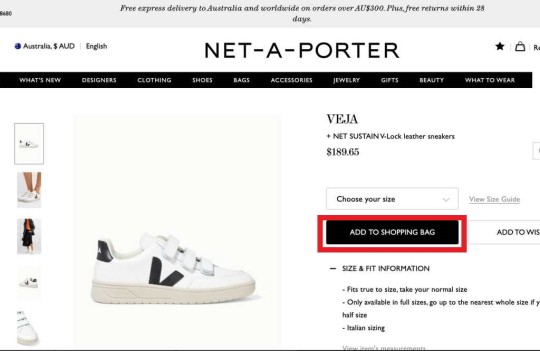
Image Source
10. Conversion: It happens when customers finish one in various tasks such as requesting a quote, filling out a contact form, placing an order, and so on.
11. Conversion Funnel: Also known as a "sales funnel," it is the path (often visually demonstrated) that your prospect takes to become a loyal customer. Here's an example of an e-commerce conversion funnel:
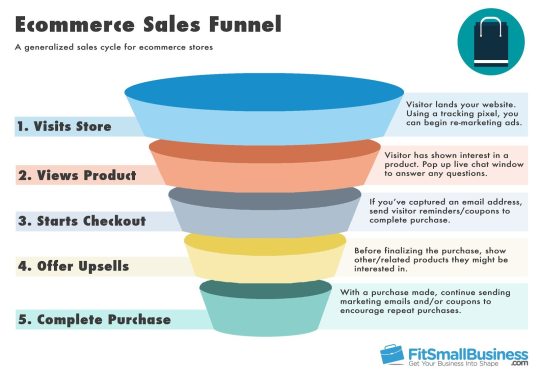
Image Source
12. Conversion Rate: It is calculated by dividing the number of visitors who transformed into paying customers divided by the total number of visitors on a site:
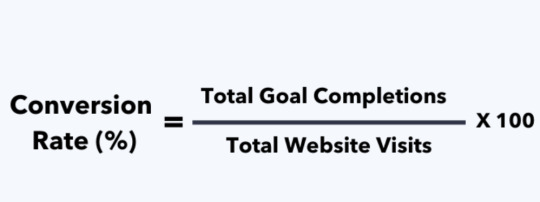
Image Source
13. Customer Relationship Management (CRM): It refers to a system wherein an organization captures valuable user data from various sources such as website, telephone, live chat, direct mail, social media, etc., and analyzes it to improve the customer experience and reach its business goal. There are numerous CRM software available in the market that can help organizations become more user-centric in their business and approach.
14. Cyber Monday: It is the Monday after Black Friday, which typically offers customers the maximum amount of deals and discounts than any other day of the year.
15. Domain: It is the main home page or URL of a website.
16. Email Marketing: It is a type of online marketing that uses a series of emails to target and engage your customers based on your mail list, which comprises users who signed up to receive emails in the first place. Below is an example of excellent email marketing at play:

Image Source
17. E-commerce SEO: These are SEO strategies that primarily work for eCommerce businesses, which includes targeting product pages, category pages, payments pages, etc.
18. Gateway: Also known as "payment gateway," it is a platform that processes payments from the user's bank to the website for online transactions.
19. Google AdWords: It is a type of advertising that allows businesses to set a budget and run promotional ads, which comprise SEO keywords to boost page rankings.
20. Google Analytics: It allows brands to monitor their website traffic and presents the data into graphs and charts so that marketers can assess their brand's online performance over specific periods of time.
21. Google Keywords: It signifies trending words or phrases that users commonly use to search within Google.
22. Inventory: It refers to the number of products and types of brands retailers amass in their stock.
23. Keyword Ranking: It refers to how your website ranks for specific keywords on a search engine results page.
24. Landing Page: It is the page that is displayed once a user clicks on a link, or more specifically, a call-to-action button to engage with the brand and perform a desired action:
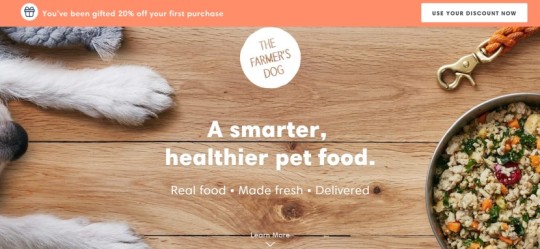
Image Source
25. Long Tail Keyword: It is a type of keyword phrase that is more targeted and usually longer (about three to five words) than commonly searched keywords. It allows brands to target a more niche audience.
26: Marketing Automation: It refers to software that can help automate key marketing processes such as segmentation, data integration, customer management, etc., to enhance your customer experience, boost sales across different online channels, and automate repetitive tasks.
27. Metrics: It is a type of measurement for assessing factors like revenue, keyword rankings, website traffic, referrals, among others.
28. Mobile Commerce: It is the process of purchasing products/services on a mobile or a wireless handheld device.
29. Niche: It refers to products/services that are made specifically for a particular industry or a select product.
30. On-Page Optimization: It refers to the diverse measures undertaken inside your website to enhance the web page listing or boost your website's position in the search rankings. It is often considered the first step of SEO.
31. Omnichannel Marketing: It is a type of retail marketing that integrates various shopping methods available to consumers (think: online, physical store, in-app, etc.) with the end goal of providing a seamless, consistent, contextual, and user-friendly shopping experience.**
32. Open Rate: It refers to the percentage of people on your email list that opened a particular email campaign. It is calculated by the number of email messages opened by the total number of email messages sent.
33: Organic Traffic: It refers to the** way in which visitors end up finding your website through a search engine query. Your page ranking will determine how quickly--or 'organically'-- users are able to find your website.
34. Page Rank (PR): It measures where a page ranks with Google or other search engines. The better your page ranking, the closer it will be to be listed on the number one spot.
35. PageViews: Also called Page Impression, it refers to an instance when a visitor visits a website page.
36. Payment Gateway: It is a** technology used by merchants to accept debit or credit card purchases from customers. It helps to protect your customer's sensitive information by encrypting the data that is transmitted.
37. Pay-Per-Click (PPC) Marketing: Also known as Cost Per Click (CPC), it refers to an advertising model where the advertiser pays only when a user clicks on their ad and is successfully directed to their website. Google’s AdWords platform is one of the most popular examples of Pay-Per-Click promotion.
38. QR Code: Short for Quick Response Code, it is a type of matrix bar code that is used for storing URLs and offering convenient access to data via a smartphone.
39. Responsive Design: It is a type of design philosophy that aims to provide a responsive aka customized viewing experience for diverse types of platforms and communication channels such as mobile, desktop, tablet, etc.:
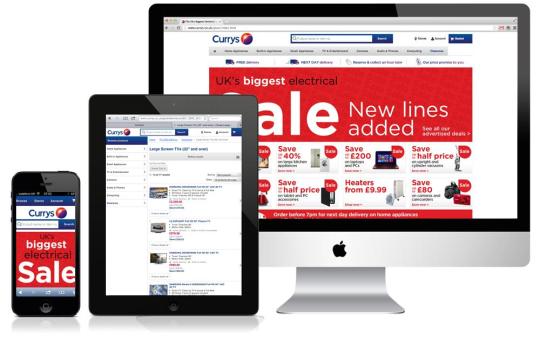
Image Source
40. Search Engine Optimization (SEO): Search Engine Optimization is a digital marketing activity that focuses on driving traffic to a website from organic search results on search engines. In other words, it helps boost the website's visibility in terms of search rankings.
41. Search Engine Results Page (SERP): It is a web page that lists all the results when users search for something using specific terms and keywords.
42. Smarketing: It is the process in which the sales and marketing teams come together to achieve a shared business goal through frequent and direct communication.
43. Third-Party Payment Processor: It refers to a merchant services provider such as PayPal that offers various payment methods to the customers. It helps eCommerce businesses to receive payments without first setting up their merchant account with a bank.
44. Traffic: It refers to the number of** visitors who visit a website during a specified time period.

45. Transaction: It refers to the process of buying a product/service online from a business.
46. Upselling: It refers to a kind of sales strategy where you offer deals on related products and persuade customers to buy more expensive products/upgrades to make a profitable sale.
47. User Experience (UX): It describes a user's overall feeling about a product/service/system with respect to factors such as ease of use, usefulness, usability, accessibility, credibility, value, and desirability.
48. User Interface (UI): It is a graphical layout of a website/app designed to allow for seamless and user-friendly interaction between customers and said application/website.
49. Web Analytics: It is a tool that allows you to assess the impact of your website on your visitors, improve effectiveness, and boost traffic. The common metrics to measure would include the number of site visits, visitor entry points, specific keywords used, online session time, why users left the website, and so on.
50. Wholesale: It refers to the** distributor or manufacturer who sells directly to retailers.
Wrap Up
As is the case with all kinds of businesses, even the e-commerce world has its own language, values, and systems in place. Understanding the basics allows marketers, sellers, and buyers, on the whole, to conduct business with greater confidence, trust, and transparency. So next time you find yourself struggling with any e-commerce term or phrase, you know where to look.

Written by our guest writer Srushti Shah, acquire.io
Srushti Shah is an ambitious, passionate, and out-of-the-box thinking woman having vast Digital Marketing exposure. She is working as a Digital Marketer and Content writer. Her key focus is to serve her clients with the latest innovation in her field, leading to fast and effective results. Working beyond expectations and delivering the best possible results is her professional motto. Other than work, she loves traveling, exploring new things, and spending quality time with family.
.flex-container { align-items: center; display: flex; flex-direction: column; justify-content: center; } @media(min-width: 768px) { .flex-container { flex-direction: row; } }
from RSSMix.com Mix ID 8230801 https://ift.tt/2PlhQkW
via IFTTT
0 notes
Text
Best PPC interview questions
PPC Interview Questions and Answers for better execution in the interview. we have chosen a rundown of top and most asked interview inquiry by the enrollment specialists.
Q 1. What is PPC Marketing?
PPC Stands for Pay Per Click. In this promoting procedure, we drive traffic from inquiry and show advertisements by means of the web crawler and accomplice destinations by paying just if a client taps on the promotions.
Q 2. Clarify What Is Google Ads?
Google promotions or Google AdWords was at first discharged on 23 October 2000 by Google which is a web-based publicizing stage where sponsors pay to show a short ad in term of increment brand permeability on web crawler and other Google accomplice sites.
One can publicize for item posting, video substance promoting, versatile application introduces inside the google advertisements system and drive traffic from the hunt and show promotions.
Q3. Clarify what is Ad Rank?
Advertisement Rank is determined by two elements Bidding and Quality score it decides your promotions position on google pages.
Q 4. What kinds of remarketing are there?
Sort of Remarketing
Site remarketing
Search remarketing
Email remarketing
Web-based life remarketing
Additionally Read: SEO Interview Question and Answer
Q 5. What sorts of watchwords are there?
Accurate
Expression
Wide
Changed Broad
Negative
Q 6. What outsider instruments do you use for watchword Research?
SEMrush
Ahrefs
Google watchword organizer
Google patterns
Q 7. What Is Meant By Search Queries?
Search Query is the particular term that a client enters to satisfy his/her ideal data.
Q 8. What Is DFP?
PDF Stands for Double Click for Publishers it is a free facilitated promotion serving arrangement which will assist you with managing your developing internet publicizing business advertisements crusades.
Q 9. What Is DFA?
DFA represents Double snap for sponsors. Two primary elements of DFA incorporates promotion dealing and advertisement detailing. It is an advertisement server used to follow the snaps and impression for the different promotion systems.
Q 10. What Is DBM?
DBM represents Double Click Bid Manager is an interest side stage DSP for google. You can purchase show media promotions utilizing automatic methodology through DBM.
Q 11. What Is Click Tag?
Snap Tag help us to follow the quantity of snap on a connection from various sources.
Q 12. Clarify how Google Ads work and how to utilize it?
Google Ads chip away at the premise of Ad rank which is a blend of Website page Quality score and Bidding cost on that watchword. In the event that your offer and quality score are superior to different promoters, your advertisement will get a higher position on google pages. Google Ads deals with Pay per Click which means you have to pay just if a client taps on your promotion.
Q 13. What is Google Ads Express?
Google Ads Express is a publicizing item that naturally deals with your online advertisements crusades which will spare your season of every day the board or errands of promotions battles. That is uncommonly made for tenderfoots.
Q 14. What is Ad Trafficking?
Promotion Trafficking is utilized in DFA/DFP
The Ad dealing is delivered by advertisement dealer on the promotion server which will be done in the wake of getting IO and creatives.
Promotion dealing is utilized for actually setting up advertisement battles.
Q 15. What Do Understand By Quality Score?
Quality Score run between 1 to 10. Quality score characterizes the nature of catchphrase contrasted with its Ads and Landing page. Quality score is utilized to compute promotion rank which aides in finding the situation of the advertisement on google pages.
PPC Interview Questions Also read: Digital Marketing Interview Question and Answers
Q 16. What are the PPC apparatuses that a PPC fresher must know about?
Change History
Catchphrase Planner
Show Planner
Advertisement Preview and Diagnostics
Names
Mechanized Rules
Q 17. What are different choices for offering other than CPC?
Offering alternatives other than CPC are
CPM-Cost per Impression
CPA-Call per Action
Q 18. Notice a portion of the programmed offering techniques?
Distinctive offering methodologies in Google Ads
Boost Clicks: Google Ads will naturally deal with your offer to most extreme snaps according to the spending limit.
Target search page area: target search page area consequently to set offers to help increment the shot that your promotions will show up on the main page of google search.
Focus out positioning offer: Automatically set offer to outrank an area
Target CPA: This offer is utilized to get the most extreme changes according to the objective CPA.
Improve CPC: Automatically changes offer to augment transformations.
Q 19. What are the most significant KPIs?
Most significant KPIs are
CPC (Cost Per Click)
CTR (Click Through Rate)
CPA (Cost per Acquisition)
Change Rate (CVR)
CPM (Cost per mile impressions)
eCPA (Effective Cost Per Acquisition)
return for capital invested (Return On Investment)
Quality Score
Q 20. Notice what is the point of confinement set for the characters in Google Ads or AdWords?
Point of confinement for Google Ads
Heading line first: 30 characters
Heading line second: 30 characters
Portrayal 1: 80 characters
Portrayal 2: 80 characters
Goal URL: 1024 characters
Pictures are not permitted in URL.
Peruse More: Google Analytics Interview Questions and Answers
Q 21. What is remarketing and advantages of remarketing?
Remarketing: It is a publicizing system that empowers the site to show focused on promotions to the client to have just visited your site.
Remarketing is otherwise called Retargeting
Greater plausibility to purchase your item.
Huge scale reach.
Records made for explicit purposes.
High change rate
Q 22. Notice Some Of The Google Ads or Google AdWords Extensions?
Various advertisements expansion to improve site traffic.
Sitelinks
Call Extensions
Offer Ads
Audit augmentation
Area Extensions
Social Annotations
Merchant appraisals
Correspondence Ad
Picture and drop-down route Ad augmentation
Versatile application augmentations
Q 23. Various kinds of focusing on video and show system battles?
There are for the most part 5 sorts of focusing on video and show organize
1) Demographics
2) Keywords
3) Topic
4) Interest and Remarketing
5) Placements
Q 24. What number of sorts of Google promotions battle are there?
Various kinds of advertisements position
1) Text Ads
2) Ads with augmentations
3) Responsive Ads
4) Shopping Ads
5) Image Ads
6) Video Ads
7) App advancement promotions
8) Call-just promotions
9) Rich media advertisements
Q 25. How to build a Quality Score of your Ads?
Activities for expanding Quality score:
Increment your CTR
Compose an eye snappy feature
Use watchword beneath 20 in every promotion gathering
Use Keyword toward the start of promotions title and portrayal
Make a superior and significant Landing page (Very Important)
Q 26. What is CRT and how to ascertain it?
CTR represents Click Through Rate.
CTR = Total number of snaps/Total number of impression * 100
Q 27. What is the Role of negative watchwords in PPC with a model?
Negative catchphrases enable you to channel specifically who see your advertisements dependent on their pursuit inquiries.
For instance, on the off chance that you are running an advertisement crusade on “Advanced Marketing course in Delhi” then words like “free”, “modest” and so forth are negative watchwords for your promotion battle.
Q 28. What does oversee situation enable sponsors to do?
Enable the client to Bid contrastingly for explicit arrangement on the Google show organize.
Q 29. How is the Bing Quality score determined?
Bing quality score is determined based on
CTR (Click Through Rate)
Advertisement Relevance
Point of the arrival experience
Q 30. What is Google Publisher Tags?
To powerfully assemble advertisement demands GPT is utilized which is a promotion labeling library. For the following reason, it utilizes promotion unit code, key worth, advertisement size, an advertisement on website pages or applications.
These are the topmost asked PPC Interview Inquiries ever.
Wish you have an extraordinary interview.
Visit our site to Enroll in the Best Digital Marketing course in Delhi.
0 notes
Link
Welcome! I’m Nathan, a 22-year-old Serial Entrepreneur. This is my story of how I grew one of my companies from zero customers to 13,800 sign ups, 3000 active users and $79,000 in monthly recurring revenue in less than 90 days.So just before I start here are a few facts:The Business was a SaaS Social Media Marketing PlatformI was the sole member of the team; I had no employees or additional helpThe pricing started at €39 and came with a 3-day trial to test the service.I already owned a startup in the same space which had around 300 customers, so I had an understanding of how to market a similar business giving me a bit of a headstart.This post contains around 4000 words, so I decided to break things down into (slightly more) bite-sized chunks. Please feel through to Navigate through the article to whichever sections are most relevant to you.BackgroundJumping straight into this article, I had purchased a pre-built SaaS application, installed on a shared VPS hosted by Bluehost (not recommended, I’m now with Digital Ocean who are a million times better).The app was built with LAMP, PHP 5.6 and CodeIgniter. After installing on my VPS and checking everything was working correctly my journey of growing the business and acquiring customers began.Acquiring my First CustomerMy first point of call was Adwords, I set up a marketing campaign for Instagram Automation Software and went live with my first Ad. I managed to acquire users, but 0 converted into paying customers. I lost around $200 and turned off my campaign feeling quite annoyed that had cost me $200 with nothing gained other than a few emails.At this point, I moved on to Free Traffic Channels; I started engaging a bit in the Reddit community, and also admittedly did a bit of shameless self-promotion. I set up Google Alerts whenever someone was asking the question (“More Instagram Followers?” or “More Followers on Instagram”) I’d get an email alert and could instantly start pitching a product and offer them a free trial.Again, this was pushing users to my site, but nobody was converting into customers or entering card details for the product. It was at this point, I hired a developer to change the signup flow where a user would have to enter card details in order to access the product. This was to filter out anyone who just wanted a free product, as much as I like helping people the purpose of my business was to turn a profit.I reached out to some of my ex-customers from one of my other startups, offering them the services of my new business. I acquired my first ever paying customer who subscribed to a $5 per month plan. This is truly a great feeling; the fact it’s was only $5 didn’t matter. I think any other business owner can tell you one of the best feelings is receiving your first ever paying customer.First 10 CustomersSeeing as I had acquired my first customer through a previous relationship, I continued reaching out to previous customers of another startup of mine and managed to acquire two other paying users through old relationships.Now that I had changed the signup flow, I was also starting to see customers sign up via Reddit and was averaging about two customer signups per day through Reddit.I’m also a very active user of LinkedIn and had previously grown my network to over 58,000 connections. So I knew the power of Networking, I set up Instagram Automation targeting “Business Owners” in the USA offering Social Media Management services, I was seeing out 600 connection requests per day with personalized invitation messages.My personal Instagram account also had over 45,000 followers who were an excellent form of Social Proof. I automated direct messaging to invite users to sign up for a trial to my software, and also set up around 20+ other Instagram accounts targeting various users and offering free trials.LinkedIn & Instagram Marketing was all 100% automated, so once set up this ran forever.First 50 CustomersAt this point, I didn’t make any major changes to the growth channels. I was receiving a few signups per day, and this was all being automated. My original idea for this business is that I wouldn’t need to oversee it much as SaaS doesn’t require much human input (I was wrong!), I would just let it grow in the background while I managed my other startups and it would bring in another stream of revenue.Regarding the business itself, two changes I did make were improving the landing page; I picked up a cheap template of Envato market for $9. I edited the HTML and changed the copy and put this on the server, it really wasn’t anything special but actually doubled the conversion rate from 3% to 6%.I also changed the pricing plan from $5 per month to $5 per week; I felt psychologically seeing $5 per week felt like a lower commitment than $20 per month - although this is purely based on my opinion and has 0 research behind it. It seemed to work as the conversion rate for the site didn’t drop off whatsoever, in fact, there was no change at all which I was quite surprised by.By the time I reached 50 customers, I was around ten days in and had a total of $500 in MRR. Each new signup was worth $20/month, and I was receiving 3-4 per day meaning $60-80 worth of new business per day which isn’t bad.The cancellation rate was also very low, I only had ten days worth of data which of course isn’t great for making significant decisions, but I think only 2-3 out of 50 customers had canceled.First 250 customersAgain, just sitting back and watching my customers climb. I went and met with a fellow entrepreneur for a Beer in Canary Wharf; we were both involved in Social Media although different platforms and often exchanged ideas on the industry, tips, tricks, and hacks. It was nice as we weren’t in direct competition it made no impact on us to share what avenues we were exploring.I told him my new venture was acquiring a steady stream of customers and this was coming from free channels. He suggested scaling via Facebook Ads, having been burnt by PPC before I was hesitant but respected his advice and explored it as an avenue.After setting up Facebook Pixel, Optimising for Conversions and hoping that Facebook's powerful algorithms were going to make me rich, I sat back and waited for the customers to come flooding in. They didn’t, I was picking up signups who claimed the free trial, but about 70% canceled straight after, and my CAC was around $70. I didn’t have enough data on my customer LTV, but a customer would have to renew their subscription for at least four months for me to turn a profit, and that’s before we even include taxes, expenses, support costs, etc. I soon after turned off Facebook ads (at this point I didn’t quite understand, you need to feed the algorithm data in order for it to understand the type of people that purchase on your site, then it will, and your CAC should decrease.)Anyway, my main acquisition channels remained as Reddit, LinkedIn, Instagram and Email Marketing.By this time I had made about $600 and decided to reinvent this in some tools to grow the business. I bought an Instagram Email Scraper, that would scrape a list of profiles based on a keyword and search for emails in Bio. It would also log the number of followers and account username so you could send an email to them saying “I saw you have 2,468 followers. Our average user gains 1200 real followers per month” and I received reasonable results, but as the scraper doesn’t pull the first name it is spammy, and I didn’t scale this any further.For anyone who’s interested I used Amazon SES to send emails, it’s free to send 60,000 emails per month, so it’s a tool worth using and helps keep my expenses down as a bootstrapped founder.I also explored Referral Marketing, I took a 30-day free trial of referral candy and installed their widget on my site. I didn’t see any improvements whatsoever; I don’t think I had a large enough user base for referral marketing to be an effective marketing strategy.Given the success I had seen from updating my landing page, I turned my focus to improving our conversion rates and purchased a new theme for the landing page (which was miles better than either of the previous 2). I spent a day or two updating this and writing what I thought was fantastic copy, but really I was just sticking in the word “Supercharged” wherever it made sense!I changed CTA buttons to all say “Claim Free Trial,” and overall the website looked FAR, FAR more professional. This pushed my conversion rate up to around 11%.Now that I had a website that looked half decent, and I could say I was proud of owning I took another shot at Google Adwords. Many of my competitors were running huge campaigns, and of course, they wouldn’t be pouring money into Adwords unless they were turning a profit.So this is where the real Growth began…I set up about five different Ad types with some ad text like the #1 Instagram Growth Service. My first keywords were targeting when my competitor's customers were looking for alternatives for example “Alternatives to XYZ.” I simply said my target CAC is $20, this is the 1st month's subscription, and anything after that is profit for the business.I kept a very close eye on the keywords, and the second they went over $20 Cost Per Conversion I would pause the keyword, so I was no longer bidding on it.I started making a profit, but the conversions didn’t come in the masses. People searching for “alternatives to my competitors” weren’t exactly high-traffic keywords. However, I had now managed to make my first profitable Adwords campaign, which reassured me that it was possible to make a profit using Adwords.I was acquiring these customers for about $10-14 which was below my target CAC, I researched even more competitors and added these as target keywords.I created a free trial for Alexa.com and entered some of my main competitors, Alexa will then pull together a list of the keywords your competitors are bidding on. I simply assumed that if my competitors are bidding on them, and have been for a while, they must be making a profit.I fired up another campaign on Adwords and added in all of these keywords. Was I right? Yes, and no. Many of the keywords I copied did make a profit; however, my main competitors were charging $50-79 per month, meaning they could afford to spend far higher amounts to acquire customers. Plus they already had substantial user bases in the region of 10k+ customers, so they could afford to lose a bit of money on ads.I monitored Adwords closely, being sure to turn off any keywords that went over $20/conversion. You also analyzed countries we were bidding on, and with higher than $20/conversion cost were removed, and also monitored, age, gender, device and applied the same principle.At this point I was bidding on around 30 keywords, I had previously limited my Adwords campaign to $50/day, but now I was making a profit, and my confidence had grown this went up to $100 per day for several days, I kept analysing the data, and then put up to $250/day making sure I was still making a profit on all my keywords.First 1,000 CustomersNow that I had a successful Adwords campaign running, my problem wasn’t acquiring the users; it was affording to keep my campaign financed. My business had made about $1000 by this point, but with a $250/day Adwords campaign running, I would be out of cash in 4 days.The users received a 3-day trial, and then once charged the money would stay in Stripe and would take another five working days to process and hit my business bank account, after that, it would be another 30-days until I saw a profit.To solve this issue, I wanted to increase prices for the app. I had a steady user base, and even changing by a few dollars would have a significant impact on my annual recurring revenue.I initially decided to change from charging $20/month to €20/month. This is quite strange as I’m based in the UK, and we use GBP, but I felt the Euro was more widely recognized, and also more stable after Brexit and the uncertainty around the pound.20 USD to GBP is around £15.1620 EUR to GBP is around £17.53Also, when we look on a larger scale, even a £2 increase in pricing is an extra £2000 in revenue per month per 1000 customers. Making this change didn’t decrease conversions whatsoever which again I was surprised by, that’s twice I had put up the prices, and conversion rates hadn’t decreased at all.I continued with this pricing model for a week, and after talking about this to my girlfriend, she raised the interesting point of “If something’s cheap, often people think it’s not good, or too good to be true.” This was understandable, If most of my competitors were charging double or even quadruple my rates, was I being viewed as a lower quality cheap option? With this in mind, I thought I’d raise the prices again to see if my conversions drop at all.I doubled my prices, from €20/month to €39/month (psychologically ended your pricing with a nine is the most appealing to the mind). I was shocked by the results, my conversion rate didn’t drop at all, It went up. It seemed people had more trust in a more expensive app, even though no changes to the software had been made whatsoever. The only difference had been pricing; people trusted a more expensive product over a cheaper version which is exactly the same! (Funny how the mind works!).Now with increased pricing, this opened the doors for me to bid on keywords that had previously been over my desired CAC. So I dived into my Adwords history and anything keywords that were under $40 CAC I reactivated in the campaign.Now I was bidding on more keywords, and for all my existing keywords I would be doubling my money assuming they didn’t cancel their account.One thing to note, whilst my conversion rate improved, my churn rate also increased. Unfortunately, I don’t have any specific metrics as I wasn’t tracking this from the start, but I can tell you a more expensive app significantly pushed up cancellations.My Adwords campaigns were bringing in a steady profit, I scaled up my ad budget to $500/day, and as soon as money entered my bank account from Stripe, I was pushing this straight back into ads.With a $500/day campaign, I was bringing in around 50-60 new signups every day.Now that I was bringing in more than a steady stream of customers I was focusing on maximizing revenue.I installed a few apps to help boost conversions and retain customers.Intercom - $500Intercom to provide Live Support to users, I also setup Intercom Engage to send in-app messages to users.This was a very effective way to automate use onboarding at scale; I could deliver targeted messages and send embedded YouTube videos explaining each feature.I also set up welcome messages on the landing page asking users if they had any questions and asking if they wanted to join our mailing list/OptKit - $39I also installed OptKit; I used exit-intent popups on the landing page to offer an extended trial of 30-days in exchange for an email, I also offered this on each stage of the sign-up funnel before users entered their card details.This actually saved around 15% of all exit attempts, which isn’t bad at all.UseProof.com - $139One of my competitors were using UseProof, I installed it on my site, and it worked. Notifications of my most recent sign-ups were displayed on my landing page, sign up page and upon entering card details.I felt this really pushed users to complete the sign-up process if they can see many other many doing this.Reviews.co.uk - $50This is a cool app; they allow you to embed a widget on your site displaying reviews you receive from customers. This also helped with Social Proof and boosting conversions.I did a test and played around with many other tools, but these were the ones that actually worked and had the most significant impact on my conversions. They were also the motivation behind my most recent startup Notifia hybrid of the 4-tools listed above available at a fraction of the cost.AutopilotHQ - $200This is a visual email marketing application where you can create complex user journeys based on behavior and interaction. Using Zapier, I created an Automation Workflow, so whenever a user created an account but didn’t enter their card details, I would send a drip sequence containing 11 emails over the next three months. This would offer a 30-day free trial, and I was receiving around 10% conversion rate on these emails.Churnbuster - $99As the business continued to scale, I was receiving more and more failed payments I added churn buster which sends automated emails on failed payment asking users to update their card. I did profit from the service but later canceled the subscription as Stripe recover was even more effective and is free.At this point, all of my Growth Channels have been set up. As a had a large customer base and decent traffic to the site most of my time was forced towards customer support (this is probably my biggest regret, and If I were to do this again I would hire external help. I was a terrible support agent, and I found the job very repetitive and unenjoyable.If I were to do this again, I would hire a Customer Support Agent and Customer Success Manager, one to handle basic queries and the Customer Success Manager to optimize users experience and also look for opportunities to upsell.Seeing as I was gaining 50-60 new customers per day on average, it didn’t take long to reach 1000 customers.2,500 customersFrom a customer acquisition perspective, I didn’t change much, aside from putting ad budget up to $1000 per day, setting up retargeting ads, optimizing ad relevancy scores to try to achieve 10/10I did add a second campaign which was a mirror of the first campaign only with campaign objective changed to target Cost per Conversion, rather than maximize conversions.Aside from that, I didn’t feel the need to change anything. I had an Engine of Growth that was making me money automatically if anything now I look back I was scaling too fast.No matter how much automation you introduce to your business when one person and a heck of a lot of automation try to manage 3000+ active users, things get messy.At this point, I turned my focus from acquiring new customers as this was all automated to trying to boost revenue through existing users.As I mentioned earlier, I was also seeing a rise in failed payments, when I last tallied up the total number of failed invoices it was in the region of $600,000+ worth of failed payments. I’ve since done my best to try and recover some of this revenue, using automation scripts to Auto Retry, although Strip’s recover is pretty damn good.My days were pretty much spent on Intercom responding to customer queries.Aside from that, I didn’t really make any further changes to the engine of Growth; I continued to spend $1.5k on ads per day. Now, a total of 3 months (90 days) since I first set up on my $30 shared VPS I had achieved $79,000 in monthly recurring revenue. I had a total of 13,000 users in the MySQL Database, 3000+ of those had entered credit card details and over 2000 active, paying customers.Then What?Following a legal dispute with Facebook, I really can’t and don’t want to go into detail I was forced to shut down and no longer offer services to my users.What did I learn from this experience?With PPC Advertising, you must be prepared to lose money to collect Data on what works and what doesn’t. Be prepared to lose money first; profits come later.Don’t underestimate the power of a good landing page ;)Don’t price your product too cheap; people are wary when something seems too cheap compared to the competition.If you are using PPC ads and spending large amounts, invest in tools for CRO. Hotjar, Notifia.io (shameless plug), Intercom would be excellent starting pointsWhat would I do differently?Focus on my strengths - My core skill set lies with Growth Marketing. I’m a jack of all trades and can do pretty much any task within my business; I tend to set up all the servers myself, usually build sites from scratch and then market and grow the business.However, when a company gets to a certain point, you need to hire external help who are experts rather than just having an understanding of the field. If I was in the same scenario, I would have hired full-time customer support, customer success manager, and at least a part-time full-stack dev.I should have also brought on a CRO specialist and UX designer to give recommendations.—Optimise cancellation pagesThis is so important, especially with SaaS. It's pretty much your last chance to save your customer from leaving. I developed the Churn Saver kit which delivers targeted offers to your users based on their motivation to quit.—Talk to users about what they would like to see improved.Other PointsI believe it’s better to focus on 1-2 channels of Growth and do them well, very well. Unless you have an entire team to cover each channel of Growth, it’s virtually impossible to cover them all effectively.With over 19 Growth Channels you want to find the ones most effective for your business and then optimize, and scale.What am I working on now?Given the success in my previous Startup, I decided to jump straight back into SaaS. I was working on building many in-house tools for internal use to optimize our AARRR metrics (Acquisition, Activation, Revenue, Retention, and Referrals).However, I’ve since launched them as a platform, and they are available for everyone to use @ Notifia.io - We are still in Beta stages, but when completed it will be an AIO platform for growth with the following features...Acquisition: Social Proof Widgets, Live Visitors on-site, # of rent purchases, others viewing this product, Checkout Abandonment Kits, Triggered CTA cards, Exit Intent triggers offering discount coupons, Automated Demo BookingsActivation: Onboarding Cards, Automated Messages, Onboarding checklistsRevenue: Upsell customers, Failed payment notifications, Hosted Payment FormsRetention: Churn Reduction via User Off-boarding Surveys with triggered offersReferrals: Refer a Friend Widgets, Social Media Share, Giveaway kitsFeedback: Exit Intent survey, Feedback popup, cancellation survey, NPS surveysCurrently, the average marketer has eight products installed on their site. Usually meaning eight paid subscriptions, and with Notifia.io I’d like to offer end to end tools for Entrepreneurs to Grow Online Businesses.I’m going to be writing about the entire journey from $0-$10m ARR as well as building a YouTube series documenting the entire process of growing a company.I’ve struggled to find a good eCommerce channel that isn’t just trying to sell you on some $999 course, and I’d like to change that and deliver some value back to the community. I’ll be publishing videos on Youtube.com/nathastonIf you have made it this far, thanks for reading and I hope you enjoyed it.All the best,Nathan.Orig Post: https://blog.notifia.io/growth-hacking/bootstrapped-79k-mrr.html
0 notes
Text
300+ TOP PPC Objective Questions and Answers
PPC Multiple Choice Questions :-
1) True or False. An advertiser is selling ballet slippers. If he does not want his ad to appear when 'wedding ballet slippers' is queried, he should apply the negative-match keyword 'wedding.'
A. True
B. False
Ans: A
2) The most effective AdWords ad headlines ______.
A. include the company name or website domain name
B. do not contain the most important keywords
C. are written in all capital letters
D. directly relate to the keywords being searched
Ans: D
3) What is the CTR for a keyword that has 25 clicks and 100 impressions?
A. Whatever it is, it's not good.
B. 25%
C. 2.5%
D. 250%
Ans: B
4) When editing an Ad Group's properties you CAN NOT do the following:
A. Pause the Ad Group so ads stop showing.
B. Set a default bid that every keyword in the Ad Group will inherit by default.
C. Increase your Daily Budget.
D. Change the name of an Ad Group that already exists.
Ans: C
5) To indicate a keyword as an exact match, which of the following should be used?
A. None
B. Brackets
C. Quotations" "
D. Parenthesis ( )
Ans: B
6) Single-word or general keywords are ______.
A. excellent for your return on investment
B. too broad and can lead to clicks from people who don’t know what you’re offering
C. useful in generating highly targeted traffic for your site
D. good for preventing irrelevant traffic
Ans: B
7) Let's say that you have a new product that needs to be advertised in a specific location. What action should you take?
A. Create a new account
B. Set an additional location target in an existing campaign
C. Create a new campaign
D. Create a new ad group in an existing campaign
Ans: C
8) Which punctuation should you apply when using the broad-matched keyword matching option?
A. None
B. Brackets
C. Quotations" "
D. Parenthesis ( )
Ans: A
9) Which of the following IS NOT a factor used to determine Quality Score?
A. Your account history, which is measured by the CTR of all the ads and keywords in your account.
B. The historical CTR of the display URLs in the ad group.
C. The number of keywords on your landing pages.
D. The relevance of the keyword and the matched ad to the search query.
E. The relevance of the keyword to the ads in its ad group.
Ans: C
10) An AdWords Standard Edition account can house up to ______ campaigns and ______ ad groups per campaign.
A. 1,1
B. 10,25
C. 25,100
D. Unlimited, Unlimited
Ans: C
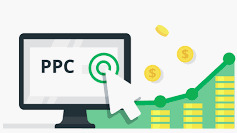
PPC MCQs
11) Which of the following is not a good way to expand your keyword list?
A. List 2- to 3-word phrases that searchers might use to find your product or service.
B. Use a keyword tool.
C. List as many keywords as possible to draw all possible traffic.
D. List plural variations, synonyms, and spelling variations of your existing keywords.
Ans: C
12) What formula does Google use to determine the actual CPC when an advertisers' ad is clicked on?
A. Clicks / Impressions
B. QS * Max CPC (bid)
C. Position * QS
D. Impressions * Clicks
E. None
Ans: B
13) Which keyword matching option provides the best possibility for high numbers of ad impressions?
A. Exact Match
B. Broad Match
C. Phrase Match
D. Negatives
E. High Traffic Match
Ans: B
14) True or False. A low CTR on content pages always indicates that your ads are not profitable.
A. True
B. False
Ans: B
15) Google determines an ad's rank based on:
A. your website's performance in Google's natural search results.
B. your CPC bid.
C. your keyword's quality score on Google and its CPC.
D. the length of time you have been an AdWords advertiser.
Ans: C
16) True or False. A bid can be set for both an Ad Group AND a keyword.
A. True
B. False
Ans: A
17) Which three of the following can be done to increase traffic? (Select 3)
A. Add new or unused keywords
B. Create keywords for unadvertised products
C. Delete all poorly performing keywords
D. Raising your Maximum CPC
Ans: A,B,D
18) True or False. Exact match tends to give you fewer clicks but higher conversions.
A. True
B. False
Ans: A
19) It is important to browse competitors' advertisements and sites ______.
A. to help you get an idea of what sets you apart from them
B. to help you mimic some of the effective techniques that competitors use
C. to help you to show your ads on the same keywords
D. so you can incorporate effective phrases from their ad text
Ans: A
20) True or False. You can use multiple keyword matching options for different keywords in the same ad group.
A. True
B. False
Ans: A
21) The formula to calculate CTR is:
A. impressions + clicks + conversions
B. clicks / conversions
C. conversions / impressions
D. clicks / impressions
E. None of these.
Ans: D
22) The last visible line on an AdWords ad is called:
A. The CTR.
B. The Display URL.
C. The Description Line 2.
D. The Landing Page.
E. The Conversion Rate.
Ans: B
23) Which of the following is not a technique for optimizing your account?
A. Organizing your ad groups
B. Editing your landing page
C. Increasing your daily budget
D. Changing your cost-per-click (CPC) bids
Ans: C
24) Each AdWords campaign has its own daily budget.
A. True
B. False
Ans: A
25) The more _______ a keyword, the more potential traffic it has.
A. specific
B. unprofitable
C. irrelevant
D. general
E. exact
Ans: D
PPC Objective type Questions with Answers
26) A searcher types a (blank) into a search engine to find information. What is (blank)?
A. Keyword
B. Campaign
C. PPC
D. Search Query
E. Text Ad
Ans: D
27) What is the CTR of an ad that has 30 clicks and 1,000 impressions?
A. 3%
B. .03%
C. 30%
D. 33%
E. 300%
Ans: A
28) What is something you CAN NOT do to improve the QS of a particular keyword?
A. Change the ads that are being matched to it.
B. Reset the QS so it can have a fresh start.
C. Add negative keywords to the keyword's Ad Group.
D. Change the keyword's Match Type.
Ans: B
29) True or False. It is best to keep keyword lists in each ad group small and manageable.
A. True
B. False
Ans: A
30) True or False. The default setting for any new keyword is phrase match.
A. True
B. False
Ans: B
31) What is the structure of an AdWords account from the top down?
A. Account, ad group, campaign, ad text and keywords and placements
B. Account, campaign, ad text and keywords and placements, CPC and budget
C. Account, campaign, ad group, ad text and keywords and placements
D. Account, budget, ad group, campaign and keywords and placements
Ans: C
32) Which three of the following changes to your campaign settings can increase traffic? (Select 3)
A. Opting to show your ads on our content network
B. Opting to show your ads on our search network
C. Increasing your daily budget
D. Targeting one local region
Ans: A,B,C
33) If a keyword has a good CTR but is not converting well, what should you try changing?
A. The matching option
B. The landing page
C. The daily budget
D. The language targeting
Ans: B
34) Which of the following does not apply to the entire AdWords account?
A. Billing information
B. Login email address
C. Daily budget
D. Account preferences
Ans: C
35) Quality Score is used by Google to: (check all that apply)
A. determine how high your ad will be ranked.
B. determine your site's conversion rate.
C. determine your daily budget.
D. determine if a keyword is eligible to enter an ad auction.
E. determine what will be your actual CPC.
Ans: A,D,E
36) SERP is an acronym that stands for:
A. Search Engine Ranks and Positions
B. Search Engine Result Pages
C. Still Everything's Ranking Poorly
D. Search Engine Responsibility Policies
Ans: B
37) Which of the following statements is true about AdWords ad ranking?
A. Your ad can't be locked out of the top position based solely on price
B. Having irrelevant keywords and ad text will result in a better rank for your ad
C. Well-targeted ads are those that target the largest number of people
D. The advertiser who bids the most will have the highest ad rank
Ans: A
38) A (blank) is something that Google uses to match a search query with a text ad. What is (blank)?
A. Search Query
B. Keyword
C. CTR
D. Conversion Rate
E. Text Ad
Ans: B
39) An ad with the keyword "cheap chocolate" (in quotations) would run on which of the following search queries?
A. Quality chocolates cheap
B. Cheap yummy chocolates
C. Chocolate cheap and tasty
D. 'Good cheap chocolate'
Ans: D
40) True or False. It is not possible to pause an individual text ad.
A. True
B. False
Ans: B
41) For a website selling books, which is not an effective negative keyword?
A. Free
B. Phone
C. Yellow
D. Buy
E. Club
Ans: D
42) What is one thing that WILL NOT improve an ad or keyword's CTR?
A. Improving the landing page.
B. Adding negative keywords.
C. Setting match types for your keywords.
D. Creating multiple ad variations and letting Google decide what ad is best to show.
Ans: A
43) ______ keywords only show your ad when the precise phrase is used in the search query – without any other words before, between, or after.
A. Phrase match
B. Precision match
C. Negative match
D. Exact match
Ans: D
44) The formula for a PPC conversion rate is:
A. conversions / clicks
B. conversions / impressions
C. conversions + clicks
D. conversions + impressions
E. (conversions + clicks) / impressions
Ans: A
45) Which of the following actions cannot be performed from the 'Keywords' tab?
A. Edit your cost-per-click (CPC) bids
B. Check to see whether a keyword is showing ads
C. Edit your AdWords ad text
D. Pause individual keywords from showing ads
Ans: C
46) True or False. Advertisers who have been with AdWords for many years don't need to optimize their accounts.
A. True
B. False
Ans: B
47) When editing a campaign's properties you CAN NOT do the following:
A. Set what language you want your ads to show in.
B. Set a daily budget.
C. Set a specific location to show your ads in.
D. Set the bids for all your keywords.
Ans: D
48) Which of the following is not a way in which you can fine tune your ads for search targeting?
A. Target specific locations and languages.
B. View the keywords that your competitors use.
C. Choose keywords that are highly relevant for your product or service.
D. Use keyword-match types.
Ans: B
49) Which of the following IS NOT a keyword status option.
A. Paused
B. Active
C. Clicked
D. Deleted
Ans: C
50) True or False. With AdWords CPC advertising an advertiser pays each time an appears on Google.
A. True
B. False
Ans: B
PAY PER CLICK Questions and Answers pdf Download
Read the full article
0 notes
Link
做国外网赚,自然少不了要和广告联盟打交道,英语阅读交流方面也会常用到,虽然借助Google翻译这些基本能凑合着,但是有些术语、缩写和黑话,有时候你即使去搜索也找不到答案。今天3zschool就为大家整理了一下affiliate marketing常见的术语,供大家查找,也欢迎大家转载。
1、 什么是BANNER(横幅广告)?
放置在网站的页面上用于表现商家广告内容的图片,通常大小为468*60像素,往往做成动画形式,这样更具有吸引力。
2、 什么是PAGE VIEW(综合浏览量)?
网站各网页被浏览的总次数。一位访客有可能创造十几个甚至更多的PAGEVIEWS。
3、 什么是IMPRESSIONS(广告闪现次数)?
广告BANNER出现的次数,一般情况下与含有该广告的网页被访问的次数相同。
4、 什么是 CLICKS (点击次数)?
访问者通过点击横幅广告而访问商家的网页,称点击一次。点击这个广告,即表示他对广告内容感兴趣,希望得到更详细的信息。
5、 什么是 CLICKS RATIO (点击率)?
如果广告BANNER的闪现次数(IMPRESSIONS)为10000次,而其点击次数(CLICKS)为300次,那么点击率即为3%。 目前,广告的平均点击率为 2% 。点击率可以准确地反映广告效果, 也是网络广告吸引力的一个标志。
6、 什么是FIRST VIEW(第一屏)?
是读者浏览一个网页时,所看到的第一屏,访问者不用拖动滚动条就可以看到,效果较佳,这个位置条受到绝大多数客户的青睐,因此价格也较高。
7、什么是CPM?
CPM是Cost P e r Thousand的缩写,即每千人次访问的收费或Banner闪现一千次的费用,例如一个广告 Banner 的报价是$10/CPM,意味着每一千人次看到这个Banner,就收费$10。按CPM收费已经成为网络广告的惯例。
8、为什么不按点击广告Banner的次数来收费?
按点击广告Banner的次数来收费,在国际上很少采用。因为网页访客是否点击你的广告Banner去你的网站浏览,还取决于很多因素,比如Banner的设计,客户的网站的内容等等。
(adsbygoogle = window.adsbygoogle || []).push({});
9、PTC(Pay to Click)点击赚钱
10、surf冲浪,即上网。
11、b/c = because
12、PO = Program Owner
13、plz = Please
14、addy = address
15、FYI = For Your Information
16、cmi = count me in
17、cmo = count me out
18、IMO = In My Opinion
19、IOW = In Other Words
20、ISO = In Search Of
21、BTW = By The Way
22、BRB = Be Right Back
23、BRT = Be Right There
24、IM = Instant Message
25、PM = Personal Message
26、LOL = Laughing Out Loud
27、LMAO = Laughing My A** Off
28、LMFAO = Laughing My F*cking A** Off
29、ROTFLMAO = Rolling On The Floor Laughing My A** Off
30、ROTFLMFAO = Rolling On The Floor Laughing My F*cking A** Off
31、SLMAO = Still Laughing My A** Off
32、Peeps = People
33、2QT2BSTR8 = Too Cute To Be Straight
34、NPA = New Program Alert
35、WM = Web Master
36、bank wire 银行汇款
37、TOS = Terms of Service
38、FAQ = Frequently Asked Questions
39、IMHO = In My Humble Opinion
40、AFAIK = As Far As I Know
41、PBUH = Peace Be Upon Him
42、SO = Significant Other
43、GF = GirlFriend
44、W8 = wait
45、U = you
46、AD views 广告浏览数,网幅广告被用户下载、显示的次数,等同于impression。
47、Advertisement Management 广告管理,利用特定的系统管理网页或广告网络揪发的网幅广告,同时提供即的显示数、点击数统计,高级的广告管理系统还能根据访问者的特点和时间选择出现不同的网幅广告。
48、Banner 网幅广告?标准GIF格式以外的网幅广告称为Rich Media Banner。
49、C/I Ratio(Click-through to impression ration) 点击与显示的比率
50、Click Ratio 点击率,如果该网页出现了一万次,而网页上的广告点击次数为500次,则点击率为5%。
51、Click Through 点击某一链接的行为
52、Co-Brand 共同标志/商标,有时联盟成员之间可以将自己的标志和商标放在框架顶部页面中,以便访问者浏览其网页。
57、Commission 佣金,参加联盟程序所取得的收入,联盟成员可从联盟站点介绍的访客的销售收入中提成,这个佣金可能是购买或活动的固定费率。
58、charge 手续费
59、bonus 红包,红利,花红,奖励
60、money order 汇票
61、Hosting/Hosted 每当用户点击链接时进入一个网站的页面,该页面的图像和HTML文档由网站服务器提供,当调用该链接时,这些图像和其他部件就由服务器存储。
62、Impression 投放次数,网页被访问的次数。
63、Lead 引导,用户在广告商网站上注册、加入或下载
64、O/C Ratio 点击与定购的比率,实际点击数与商人网站定购次数的比率。
65、Pay-For-Performance 行动付付,网站访客采取某一行动而取得付款
66、Pay-per-Click 每点击支付额
67、Pay-per-Impression 每显示支付额
68、Pay-per-Lead 广告商对每一位介绍到该网站的合格注册访客的网站,按固定费率支付的费用结构
69、Pay-per-Sale 广告商对每一位介绍到该网站的进行消费的网站,按产品或服务销售收入的百分比支付的费用结构
70、Portal Page 点击广告后连到的页面, 通常是针对广告内容重新设计的页面。
71、Return Days 返回天数,用户第一次访问和下一次访问商人站点的天数。
72、Storefront 店面,用于显示新产品或特殊产品的定制页面。
73、Sub-Affiliates 联盟分站点,用一个帐户维护一个以上的站点,主要站点为联盟站点,其他站点为联盟分站点。
74、deposit 存入
75、withdraw 取出
76、refund 返还,报销
77、compansation 补偿
78、rate 比率
79、exchange 兑换
80、interest 利息
81、principle 本金
82、investment 投资
83、account 帐户
84、PPC,就是按点击付费,大家可以理解成国内的百度竞价。每一个点击我们广告的用户,我们都得付一定的费用;
85、Social Network,国内目前貌似就是人人网有这种广告,国外的,主流有Facebook和POF,就是在一个社区里刊登我们的广告,一般有PPC和CPM(按一千次展示付费)两种形式;
86、Display,买别人网站的广告位,以BANNER的形式为主,一般是按CPM形式付费;
87、PPV,弹窗广告,这种弹窗跟国内的弹窗比较不一样,通过PPV的联盟我们可以TARGET用户在打开特定的URL才会弹出我们的广告。
做Affiliate接触最频繁的角色:
88、.广告联盟(Affiliate Network、CPA Network)
广告联盟是一个平台,是一道桥梁,他们的存在就是为了帮助广告主刊登在线广告,而广告联盟本身不会帮广告主进行任何推广,而是把广告推广交给Affiliate去操作,从而赚取差价;
89、广告商(Merchant、Advertiser)
广告商就是从广告联盟里,投放广告的商家;
90、发布者(Affiliate、Publisher)
发布者就是从广告联盟里,选取广告商的广告去推广,从而赚取佣金;
91、流量联盟(Traffic Network、AD Network)
这种联盟,他们以卖流量为主,他们卖的可能是自家的流量(SELF SERVE),例如Facebook,POF,PPV等;
也有可能是倒卖别人的流量,例如Google Adwords的内容广告,也可以参照国内的阿里妈妈;
跑media buy操作最常见的:
92、ROI – Return of investment -投资回报率
我们做正规,最看重就是这个,假如我们在A广告投入10刀,产出15刀,那么ROI就是50%;同理,如果产出5刀,ROI是-50%
93、CTR – Click Thru Rate – 点击率
例如100个人看了你的广告,3个人点击了,那么你的点击率是3%;在大多数有PPC模式的平台(BING,ADWORDS,FACEBOOK),你的广告点击率越高,你每次点击的费用就越低;
94、Campaign – 广告活动
流量平台里,campaign可以理解成广告组的意思,一个campaign下可以有多个Creative(广告样式)。
95、Creative – 广告样式
就是你给用户看到的广告样式,或者指某个campaign下的一个子广告,每个平台的creative都不一样,像pof和fb是以图片+文字的广告样式;PPC中,我们的text ad就是我们的creative;Display的话,banner就是我们的creative。
96、.CTA – CALL TO ACTION – 呼吁行动
CTA就是一些类似”join now“ ”click here“ ”start today“ ”countinue“ 等LP或者creative上,增加用户点击和转换几率的广告语,常见于一些LP上的BUTTON点击按钮;
97、Pixel – 转换图素
Pixel我们用于放在联盟后台对应的广告里,pixel一般从我们的追踪工具(tracking202或者cpvlab)里提取,然后放到联盟后台去。这样追踪工具才能准确统计出哪里来的流量带来转换。
98、LP – LANDER – LANDING PAGE -引导页
用于增加转换,是用户点击你的广告后和到广告商页面之间的一个桥梁,绝大部分情况下,LP可以增加我们的盈利。
99、CPA – COST PER ACTION – 按行动付费
CPA是目前AFFILIATE MARKETING主要的形式之一,当用户完全广告商要求的行动,你就会获得佣金。
但是CPA的模式,广告商会在乎你的推广质量,如果你带过去一定的转换后,广告商无法从你的转换盈利的话,那么你就会面临被广告商要求你停止推广的局面;
100、CPL – Cost Per Lead – 按引导付费
这种其实和市面上大部分CPA都差不多形式,但是CPL的话,大部分时候广告商只要求有效的注册,对转换的质量要求偏低甚至无;
101、Revenue Share – 收入分成
这种是,你带过去的用户,给广告商带来多少收入,广告商就分成多少给你。常见于DUBO类和CHENGREN类广告,这种模式你可以拿到多次分成;
101、Split test – 轮换测试
举个例子,你有2个LP,用户访问的时候,50%到LP 1,50%到LP 2,那么你可以测试得出哪个LP的转换率高一点;同理,也可以同一个LP,50/50几率到2个不同的offer,来测试哪个offer的转换率高一点。
指标
Mobile affiliate marketing 有许多指标。
102、EPC(Earning per Click):EPC=总收益/点击次数。CTR(Click through Rate):点击次数/展示 X100%,例如,25000 次展示中有50 个人点击=0.20%CTR。这种适用于横幅 CTR(Banner CTR)和着陆页 CTR(Landing Page CTR)。
103、eCPM(Effective Cost per Thousand):公式是-总收益/展示次数 X1000=eCPM,即每千次展示你的收益。
104、CPA(Cost Per Action) :每行动成本
CPA计价方式是指按广告投放实际效果,即按回应的有效问卷或定单来计费,而不限广告投放量。CPA的计价方式对于网站而言有一定的风险,但若广告投放成功,其收益也比CPM的计价方式要大得多。广告主为规避广告费用风险,只有当网络用户点击旗帜广告,链接广告主网页后,才按点击次数付给广告站点费用。
105、eCPA(Effective Cost per Action):广告展示后实际每次 lead 或 sale 的花费
如果你正使用一个固定的追踪办法,它会自动地计算大多数这些指标。你的终极目标是得到一个高的横幅 CTR 和着陆页 CTR,以及高的 CR,如果你有了高的横幅 CTR 和着陆页 CTR,却没有高的 CR,这时就需要 test:你要 test 几个变量来找到一个能获利的模板。
Mobile affiliate marketing 术语与主流的 marketing 一致。
106、SOI(Singel Opt In):一种需要访客进入到 detail 不需要确认的 offer。当确认为一次转化时也有可能需要其它领域的数据。(SOI 是表格填写完就算激活)
107、Double Opt In(DOI):一种与 SOI 类似的,但是需要访客通过他们在邮箱中收到的链接进行确认的 offer。(DOI 是表格填写完,会受到邮件,点击里面链接确认才算激活)
108、Pay per Lead(PPL):一次成功的 lead(SOI 或 DOI)所得到的佣金
109、Pay per sale(PPS):一次成功的付款交易佣金
110、Pay per Install(PPI):也称 PPD(Pay per Download),一次成功的安装/下载的佣金
111、Revenue Share(RevShare):当一个用户变成了付费会员时,你能持续获得佣金或该会员付费一定的比例作为佣金
112、Direct Linking:将一名访客直接从你的广告页面带到 offer 页面而没有其它中间网页的链接
113、Landing Page(LP):中间页面,当访客点击你的广告时,首先跳到 LP 页,通常作为预卖页面或分流访客的页面
114、Self Serve Network:一种授予你权力自主进行实时控制 campaign 的联盟(network)。例如,开始或暂停 campaigns 和横幅来挑整报价(Bids)
115、Managed Buy:一种替你管理 campaign 的联盟。例如,managed buy 会根据你的指令暂停然后调整报价,通常是通过邮件操纵。
116、Direct buy:直接与网站的拥有者谈判广告价格
117、AdServer:一个替一个或多个网站储存、循环、维护以及展示广告的平台,也可以根据不同的标准追踪、报告统计数据以及展示你的广告。
118、Impression:展示次数,即页面加载显示广告的总次数,例如,一页加载有一个广告位,则称 1 Ad Impression,一页加载有两个广告位则称 2 Ad Impression from 1 Page Load
119、Insertion Order(I/O):一个规定了 media buy 的日期与范围的文档
120、CPL(Cost Per Leads):以搜集潜在客户名单多少来收费
即每次通过特定链接,注册成功后付费的一个常见广告模式。这是我们通常称谓的引导注册,比如很久之前很火爆的“亚洲交友联盟”。
121、CPC(Cost Per Click;Cost Per Thousand Click-Through) :每次点击的费用
以每点击一次计费。这样的方法加上点击率限制可以加强作弊的难度,而且是宣传网站站点的最优方式。目前Google Adsense就采用此方式。
122、CPS(Cost Per Sales):以实际销售产品数量来换算广告刊登金额
即根据每个订单/每次交易来收费的方式。用户每成功达成一笔交易,网站主可获得佣金。比如现在比较火爆的淘宝客就是这种方式,应该说对于国内来说,这也是最靠谱的网络营销模式了。
123、CPR(Cost Per Response): 每回应成本
以浏览者的每一个回应计费。这种广告计费充分体现了网络广告“及时反应、直接互动、准确记录”的特点,但是,这个显然是属于辅助销售的广告模式,对于那些实际只要亮出名字就已经有一半满足的品牌广告要求,大概所有的网站都会给予拒绝,因为得到广告费的机会比CPC还要渺茫。
124、CPP(Cost Per Purchase) :购买成本
广告主为规避广告费用风险,只有在网络用户点击旗帜广告并进行在线交易后,才按销售笔数付给广告站点费用。
无论是CPA还是CPP,广告主都要求发生目标消费者的“点击”,甚至进一步形成购买,才予付费:CPM则只要求发生“目击”(或称“展示”、“印象”),就产生广告付费。
这些网络广告营销形式很多,但并不是所有的形式都合适,根据网站的流量,内容定位来选择一个最合适的方式才能让网络营销利益最大化,目前国内赚的很辛苦但也赚的很可观的是CPS类的淘宝客,另外为了保证广告主的利益,对于流量大的网站、论坛等CPC也是不错的选择。
125、CPI(Cost Per Install) : 按安装付费
比如以手机app为例,每一次安装,广告商就要付钱,而且只要这app一直装着,广告商也只付这一次钱,并且只管你装不装不管你看不看。CPI算是一种比较有效率的收费方式。
126、CTA 是 call to action 的缩写,意在让目标客户立即采取被期望的行动。
当然,你的客户不会随随便便的看到一个广告页面/图片就立即点击过去,好的CTA才有这样的效果,它必须设计良好并且和整个广告相得益彰,给用户一个极其吸引人的理由去跟随着CTA操作,让用户不假思索的情况下就完成了你期望的动作。
0 notes